

How to Prepare a PhD Research Plan/Schedule?
PhD research plan is a structured schedule for completing different objectives and milestones during a given timeframe. Scholars are usually unaware of it. Let us find out how to prepare it.
Between March 2021 to 2022, I read almost 15 different research proposals from students (for their projects) and only a single one, I found, with a comprehensive research plan for 3 years. Which is still not, kind of practical, probably copied from other students.
Such entities are not known to over 90% of students, if some know that because their university asked for but unfortunately, this basic procedure lacks penetration among students. I don’t know the exact reason, but students lack a basic understanding of the research process.
Meaning, that they don’t know or perhaps don’t complete their course work needly. PhD research requires many documents, SOPs and write-ups, before even starting it. For example, a rough research plan, research proposal, initial interview, competence screening, grant proposal and so on.
However, the requirement varies among universities and thus knowledge regarding basic procedures often also varies among students. So I’m not blaming students but certainly, it is the fault of the university side, as well.
When you come up with a research proposal with a research schedule or entire plant, certainly it will create a positive image and good reputation. So it is important. But how to prepare it?
Hey, there I’m Dr Tushar, a PhD tutor and coach. In this article, we will understand how we can prepare a structured plan for the PhD research and how to execute it.
So let’s get started.
How to prepare a PhD research plan/schedule?
A PhD research plan or schedule can be prepared using the GANTT chart which includes a month, semester or year-wise planning of the entire PhD research work.
First, enlist goals and objectives.
It’s not about your research objective enlisted in your proposal. I’m talking about the objectives of your PhD. Take a look at some of the objectives.
| Course work | Dry lab work |
| Proposing PhD title | Data collection |
| PhD synopsis | Data analysis- statistical, computational and other |
| Ethical approval | Thesis writing |
| Trial and research work approval | Thesis drafting |
| Review literature | Poster Preparation |
| Questionnaire design | Presentations |
| Fieldwork | Drafting a research paper |
| Conducting the survey | Drafting a thesis |
| Designing the experiment | Thesis completion |
| Wet lab work | Viva |
Note that these are all the objectives that should be completed during the PhD, but not limited to a specific subject. Note you have to show how you can complete or achieve each objective during the entire tenure of your work.
And that is what the plan/schedule is all about. Next, explain the time duration. The time required to complete each goal, roughly. For example, a semester or a year to complete the course work or 4 to 8 months for completion of ethical approval.
Now two things must be known to you, at this point in time.
- First, enlist the time required to complete each objective, as aforementioned.
- Second, what goals would you complete during each semester?
For instance, course work takes a semester to complete, but during the period a scholar can also craft their PhD research title, research proposal, ethical approval and grant proposals.
Now it is also crucial to know that there is no time bound to complete goals, but it should be completed as you explained. Let’s say you can plant it for 3 years, 4 or even 5 years depending on the weightage of your work.
In summary, the answer to the question of how to prepare a research plan is,
- Enlist your goals or objectives.
- Decide the time required to complete each goal.
- Prepare a GANTT chart.
Now you have prepared zero-date planning for your research but how to present it? The answer is a GANTT chart.
GANTT chart for PhD research plan:
GANTT chart is a task manager and graphical presentation of how and how many tasks are completed or should be completed against a given time duration. Take a look at the image below.
How can you prepare one?
Open MS Excel (on Windows) or numbers (on Mac).
Enlist goals or objectives in a column.
Enlist years (duration of PhD) in a row and bifurcate them into individual semesters. You can also prepare a month-wise plan, that’s totally up to you. In my opinion, semester-wise planning is good because research is a lengthy and time-consuming process. So monthly planning would not work.
To make a chart more attractive and readable use colors, as I used. Now mark a ‘cell’ against a column and row showing the objective which you are going to complete in a semester. Take a look.
After the end of this, your GANTT chart would look like this.
You can prepare a month-wise planning, individual semester-wise planning and goal-wise planning etc. I will explain these things in upcoming articles on 5 different types of GANTT charts for PhD.
Custom writing services:
If you find difficulties in preparing a research plan, synopsis, proposal or GANTT chart. We can work on behalf of you. Our costume services are,
- Synopsis writing
- Project writing
- Research proposal writing
- Research planning and GANTT chart preparation.
You can contact us at [email protected] or [email protected] to get more information.
Wrapping up:
Planning and executing a research schedule are two different things. Oftentimes, students just prepare as per the requirements and then do work as per their convenience. Then they are stuck in one place and just work around the time.
Plan things. Make your own GANTT chart, put it on your work table or stick it on a wall so that you can see it daily. Try to achieve each goal in time. Trust me things will work and you will complete your PhD before anyone else.

Dr. Tushar Chauhan is a Scientist, Blogger and Scientific-writer. He has completed PhD in Genetics. Dr. Chauhan is a PhD coach and tutor.
Share this:

- Share on Facebook
- Share on Twitter
- Share on Pinterest
- Share on Linkedin
- Share via Email
About The Author

Dr Tushar Chauhan
Related posts.

Why is it called a Doctor of Philosophy?

Preparing for a PhD Viva
Leave a comment cancel reply.
Your email address will not be published. Required fields are marked *
Save my name, email, and website in this browser for the next time I comment.
Notify me of follow-up comments by email.
Notify me of new posts by email.
- How to Write a Great PhD Research Proposal | FindAPhD.com
How to Write a Great PhD Research Proposal
Written by Mark Bennett
You'll need to write a research proposal if you're submitting your own project plan as part of a PhD application. A good PhD proposal outlines the scope and significance of your topic and explains how you plan to research it.
It's helpful to think about the proposal like this: if the rest of your application explains your ability to do a PhD, the proposal demonstrates the actual PhD you plan to do. Of course, being able to effectively plan and explain a research project is one of the key qualifications for being able to complete one, which is why the proposal is such an important part of the PhD application process.
Thankfully, the secret to writing a good research proposal isn't complicated. It's simply a case of understanding what the proposal is for, what it needs to do and how it needs to be put together.
On this page
What is a phd research proposal.
First things first, do you need a research proposal for your PhD? It depends on the kind of project you want to do:
- If your PhD is advertised by a university, you probably won't need to submit a research proposal for it. The broad aims and objectives for your PhD will already be defined: you just need to prove you're the right person to do it.
- But, if you're proposing your own research topic to research within a university's PhD programme, you will need to write a proposal for it (the clue is in the word "proposing")
As a rule, advertised PhDs are very common in STEM subjects, whereas Arts, Humanities and Social Science students are more likely to propose their own PhDs.
Some PhD programmes actually wait and ask students to develop their research proposal during the degree (usually after they've completed some initial training). This is normal in the USA , but it's becoming more common for some UKRI-funded UK PhDs.
For the purposes of this guide we're going to assume that you do need to write a good research proposal for your PhD application. So let's explore what's involved in that.
Pick the right programme for you
There are lots of choices, let us help you to make the right one. Sign up to our weekly newsletter for the latest advice and guidance from our team of experts.
What should a research proposal for PhD admission include?
It's natural to be a little intimidated at the thought of structuring a PhD proposal, particularly if you've never written anything like this before.
But here's the thing: a research proposal isn't a fiendish test designed to catch you out and stop you ever doing a PhD. It's actually much more boring than that.
All a research proposal really is is a document that demonstrates three things:
- Your PhD is worthwhile
- Your PhD is feasible
- You are capable of completing it at this university
Or to put it even more simply: the PhD is worth doing, it's doable and you can do it.
Demonstrate your PhD is worthwhile (the what and the why)
A successful PhD project has to make a significant original contribution to knowledge. If it doesn't, it won't meet the criteria for a doctoral degree and will probably fail the viva exam .
Your PhD proposal itself doesn't have to meet those criteria (or pass a viva!) but it does need to indicate that your PhD project eventually will.
It does that by first demonstrating that your research topic is original. That means nobody else has studied this same topic (or one very similar) before.
There are all sorts of ways a PhD can be original. You might examine new data or primary sources, to look at existing material from a fresh perspective, or deal with the impact of new events. It doesn't matter how your project is original, so long as your proposal is really specific about what makes it original.
You also need to explain why your proposed research will be academically significant. To do this properly, you'll need to acknowledge relevant existing scholarship and explain how your research will relate to it. You don't need to be exhaustive at this point, but you should be able to show how your PhD will contribute to its field and – ideally – indicate some of the gaps in knowledge it will aim to fill.
The final step in demonstrating your PhD is worthwhile is to suggest what will become possible as a result of your research. How could other researchers use or build upon your results? What might closing those gaps in academic knowledge mean for audiences outside the unviversity?
Demonstrate your PhD is feasible (the how)
It isn't enough just to show that your research is worth doing; it also needs to actually be doable.
The length of a full-time PhD is around three to four years in most countries (it's longer in for a PhD in the USA , but you don't spend all that time doing research).
Three years may seem like a long time, but researching a PhD is a lot of work and you'll probably spend at least some of your time on other activities like teaching, conference presentations or even publication.
So, one of the things your proposal needs to do is demonstrate that your project is feasible: that it fits within the scope of a PhD.
The most important criteria for this is to be clear about what you plan to do. It should be obvious from your proposal what the scope of your project is – what is and isn't included within it.
You also need to outline how you plan to go about your research. Where will you start and what order do you expect to proceed in? Is the logic for that obvious? If not, it's probably a good idea to explain it.
Finally, you need to explain the methodology you plan to use. This could include techniques for collecting data and sources, theoretical perspectives for analysing them – or both. You may also need to detail specific equipment you expect to use or fieldwork you'll need to undertake (including trips to archives or other external resources).
None of this needs to be exact or completely final. The key word here is 'plan' – but you do need to have one.
Demonstrate that you can complete it at this university (the who and the where)
So far we've thought about the project itself: what makes it worth doing and how it's going to get done. But your proposal also needs to address the who and the where: why are you the right person to carry out this research, and why do you want to do it at this particular university?
The first part of this is easier than it probably looks. Writing a good research proposal demonstrates enthusiasm for your project much more convincingly than simply saying you're very interested in it (a classic case of 'show, don't tell').
You also don't need to repeat your grades and academic achievements (other parts of your PhD application will cover those). Instead, try to underline experiences that relate to this project. Has a particular module or Masters dissertation topic prepared you with useful subject knowledge or methodological skills? If so, highlight it.
It's also fine, within reason, to be honest about the skills you don't have and to identify your training needs. This shows you're being practical about your project and thinking seriously about what it will require. Just make sure you can realistically acquire the skills and training you need within the time available (this goes back to the feasibility).
Showing your project is a good fit for the university is also relatively simple. There should already be some reasons why you've chosen this university for your PhD so make sure you explain what they are. Perhaps there's a particular supervisor you'd like to work with , or facilities and resources your research could use. The key is to emphasise the fit between the project and the university – so don't just say you want to research there because it's highly ranked .
PhD research proposal structure
Hopefully the above sections have given you a few ideas for the things your proposal needs to include. Let's be honest though, the scariest thing about a proposal isn't deciding what to include: it's actually writing it.
But, if we flip that on its head, we remember that all a research proposal really is is a piece of writing that follows a pretty standard format. And that's a lot less scary.
Research proposal structure
Because proposals for PhD all have to do the same things, they mostly follow a similar structure. Yours will probably go something like this:
- Title – Keep it simple and descriptive: the clever alliteration and quotes can come later when you write up your thesis. For now, you just want the person reading this to know exactly what your research is about and, perhaps, which prospective supervisor to send it to.
- Overview – Start by defining your research question (the what) and explaining how it contributes to current work in your field (the why). This is also a good place to reference one or two pieces of scholarship: the full literature review can wait until your PhD begins, but you should show that you have some understanding of relevant academic research.
- Methodology – Make sure the reader understands the practical and / or theoretical approaches you'll take to your research. What data will you collect, how will you collect it and how will you analyse it? Ideally refer to relevant research methods and models. It's also a good idea to provide some sort of roadmap for how you'll go about things. Don't worry, you can change it later (and you will).
- Outcomes and impact – What will exist as a result of your research (other than just another PhD on a library shelf) and what will it make possible? You don't need to identify every specific outcome from your project (blue sky research is fine) but you should think about what some potential outcomes might be.
You probably won't need to include a specific conclusion - it should be obvious, by now, what your project is doing, how you're going to do it and why that matters. A quick summary sentence is fine though, if you think it will help.
Writing tips
Being able to effectively communicate academic concepts, ideas and results is a key skill for PhD research in all subjects . Think of your proposal as a chance to demonstrate this.
The good news is that the key principles of good proposal writing aren't that different from other work you've probably done as a Bachelors or Masters student:
- Be clear – The person reading your research proposal should know exactly what it is you're proposing to research, with no room for ambiguity and confusion. This is important on a practical level (they need to know where to send it) but it's also important to the success of your application: a confusing proposal suggests a confused project. Try having a friend read it and ask them "do you know what it is I'm proposing to do here?" (even if they don't understand the details).
- Be concise – You will have more ideas than you can include in your proposal. That's fine. Choose the best ones and leave the others for your interview .
- be coherent – Follow something like the structure above. Don't start with your methodology, then say what it is you want to research.
How long should a PhD research proposal be?
Honestly? As long as the university asks for it to be. Most will have guidelines and you should follow them closely if so.
If you honestly can't find a suggested word count for your proposal, then consider asking a prospective supervisor . If you still aren't sure, aim for somewhere between 1,000-2,000 words .
As a very general rule, Arts, Humanities and Social Sciences are a bit longer than STEM proposals (and a lot of STEM students don't have to write one anyway, as we've explained).
Research proposal for PhD admission - dos and don'ts
Research proposals are a popular topic over on the FindAPhD blog , where we've shared stories of how students wrote theirs , along with mistakes to avoid and a counter-intuitive look at the things a PhD proposal doesn't actually need to do .
Here are a few general tips and mistakes to avoid:
#1 Give yourself enough time to do a good job
Preparing to write a PhD proposal takes time and effort. None of this is wasted as the process of evaluating and framing your ideas for a proposal will improve your project plan immensely. So will the need to decide which ideas to include.
But you need time and space to do that, so make sure you get it. How long it will take to write your PhD proposal is heavily dependent on your personal working style, but you'll likely need to give yourself at least a few weeks to do a good job.
#2 Set out to impress
A good proposal isn't a begging letter. You're approaching the university with a great idea that's going to contribute to and enhance their research. Be honest, be realistic, but don't be unnecessarily humble. They should want you and your project.
#3 Demonstrate original thinking!
You may not need to present original research findings yet, but your proposal does need to present original ideas – and it should be clear why and how those ideas are original.
Make sure you indicate how your project is going to expand, enhance or even correct existing work in your field. Remember that making an "original contribution to knowledge" is a key part of what a PhD is .
#1 Send the same proposal to several universities
A good proposal needs to explain why you want to do your research at a particular university. That's a big part of the feasibility (the fit between project, person and place) and methodology (how are you going to use this university's equipment and archives; when and where will you need to travel).
It's OK to apply to more than one university in parallel, but, in that case, you're writing research proposals .
#2 Use online proposal templates (without evaluating them first!)
It can be tempting to search for PhD proposal samples on the internet, but make sure you evaluate what you find. Some websites may host old proposals from previous PhD students, but there's no way of knowing how relevant these are to your subject and university – or if they were even successful! More 'generic' research proposal examples can offer guidance, but they won't be tailored to your specific project.
The best place to look for a PhD proposal sample is your university. Consider asking your supervisor if they can share a good proposal from a previous student in your subject – or put you in touch with a current student you can ask.
#3 Confuse the proposal with the PhD
We've covered this on the blog , but it's simple enough to include here too.
You're setting out to do a PhD, but you (probably!) haven't done one yet. So you don't need to include research findings, in-depth analysis or a comprehesive literature review. You need to make a case for the research and analysis you want to do.
#4 Ignore your university's help and guidance
The advice on this page is necessarily quite general. We're considering adding guides to writing PhD proposals in specific subjects in future but, for now, the best place to get specific advice for your academic field is probably the university you're applying to.
See if you can get some subject-specific tips by contacting a supervisor , or just checking with the admissions team for your department.
And remember: if they give you a structure and a word count, stick to it.
Ready to apply for a PhD?
Find out what PhD opportunities are currently available with our FindAPhD course listings .
Our postgrad newsletter shares courses, funding news, stories and advice
You may also like....

We've answered some of the most frequently asked questions about PhDs, covering course types, applications, funding and the benefits of further study.

Getting ready to apply for a PhD? Our guides explain research proposals, references and entry tests for doctoral programmes.

Our guide explains how to contact a potential PhD supervisor to discuss your proposal or ideas with them before applying.

A checklist of the things you'll need to do when making an international PhD application, from meeting the entry requirements to sorting out your visa.
FindAPhD. Copyright 2005-2024 All rights reserved.
Unknown ( change )
Have you got time to answer some quick questions about PhD study?
Select your nearest city
You haven’t completed your profile yet. To get the most out of FindAPhD, finish your profile and receive these benefits:
- Monthly chance to win one of ten £10 Amazon vouchers ; winners will be notified every month.*
- The latest PhD projects delivered straight to your inbox
- Access to our £6,000 scholarship competition
- Weekly newsletter with funding opportunities, research proposal tips and much more
- Early access to our physical and virtual postgraduate study fairs
Or begin browsing FindAPhD.com
or begin browsing FindAPhD.com
*Offer only available for the duration of your active subscription, and subject to change. You MUST claim your prize within 72 hours, if not we will redraw.

Create your account
Looking to list your PhD opportunities? Log in here .
How to write a research proposal
What is a research proposal.
A research proposal should present your idea or question and expected outcomes with clarity and definition – the what .
It should also make a case for why your question is significant and what value it will bring to your discipline – the why .
What it shouldn't do is answer the question – that's what your research will do.
Why is it important?
Research proposals are significant because it formally outlines your intended research. You need to provide details on how you will go about your research, including:
- your approach and methodology
- timeline and feasibility
- all other considerations needed to progress your research, such as resources.
Think of it as a tool that will help you clarify your idea and make conducting your research easier.
How long should it be?
Usually no more than 2000 words, but check the requirements of your degree, and your supervisor or research coordinator.
Presenting your idea clearly and concisely demonstrates that you can write this way – an attribute of a potential research candidate that is valued by assessors.
What should it include?
Project title.
Your title should clearly indicate what your proposed research is about.
Research supervisor
State the name, department and faculty or school of the academic who has agreed to supervise you. Rest assured, your research supervisor will work with you to refine your research proposal ahead of submission to ensure it meets the needs of your discipline.
Proposed mode of research
Describe your proposed mode of research. This may be closely linked to your discipline and is where you will describe the style or format of your research, e.g. data, field research, composition, written work, social performance and mixed media etc.
This is not required for research in the sciences, but your research supervisor will be able to guide you on discipline-specific requirements.
Aims and objectives
What are you trying to achieve with your research? What is the purpose?
This section should reference why you're applying for a research degree. Are you addressing a gap in the current research? Do you want to look at a theory more closely and test it out? Is there something you're trying to prove or disprove? To help you clarify this, think about the potential outcome of your research if you were successful – that is your aim. Make sure that this is a focused statement.
Your objectives will be your aim broken down – the steps to achieving the intended outcome. They are the smaller proof points that will underpin your research's purpose. Be logical in the order of how you present these so that each succeeds the previous, i.e. if you need to achieve 'a' before 'b' before 'c', then make sure you order your objectives a, b, c.
A concise summary of what your research is about. It outlines the key aspects of what you will investigate as well as the expected outcomes. It briefly covers the what, why and how of your research.
Tip: A good way to evaluate if you have written a strong synopsis, is to get somebody to read it without reading the rest of your research proposal. Would they know what your research is about?
Now that you have your question clarified, it is time to explain the why. Here, you need to demonstrate an understanding of the current research climate in your area of interest.
Providing context around your research topic through a literature review will show the assessor that you understand current dialogue around your research, and what is published.
Demonstrate you have a strong understanding of the key topics, significant studies and notable researchers in your area of research and how these have contributed to the current landscape.
Expected research contribution
In this section, you should consider the following:
- Why is your research question or hypothesis worth asking?
- How is the current research lacking or falling short?
- What impact will your research have on the discipline?
- Will you be extending an area of knowledge, applying it to new contexts, solving a problem, testing a theory, or challenging an existing one?
- Establish why your research is important by convincing your audience there is a gap.
- What will be the outcome of your research contribution?
- Demonstrate both your current level of knowledge and how the pursuit of your question or hypothesis will create a new understanding and generate new information.
- Show how your research is innovative and original.
Draw links between your research and the faculty or school you are applying at, and explain why you have chosen your supervisor, and what research have they or their school done to reinforce and support your own work. Cite these reasons to demonstrate how your research will benefit and contribute to the current body of knowledge.
Proposed methodology
Provide an overview of the methodology and techniques you will use to conduct your research. Cover what materials and equipment you will use, what theoretical frameworks will you draw on, and how will you collect data.
Highlight why you have chosen this particular methodology, but also why others may not have been as suitable. You need to demonstrate that you have put thought into your approach and why it's the most appropriate way to carry out your research.
It should also highlight potential limitations you anticipate, feasibility within time and other constraints, ethical considerations and how you will address these, as well as general resources.
A work plan is a critical component of your research proposal because it indicates the feasibility of completion within the timeframe and supports you in achieving your objectives throughout your degree.
Consider the milestones you aim to achieve at each stage of your research. A PhD or master's degree by research can take two to four years of full-time study to complete. It might be helpful to offer year one in detail and the following years in broader terms. Ultimately you have to show that your research is likely to be both original and finished – and that you understand the time involved.
Provide details of the resources you will need to carry out your research project. Consider equipment, fieldwork expenses, travel and a proposed budget, to indicate how realistic your research proposal is in terms of financial requirements and whether any adjustments are needed.
Bibliography
Provide a list of references that you've made throughout your research proposal.
Register now
Apply for postgraduate study, find a supervisor.
Search by keyword, topic, location, or supervisor name
- 1800 SYD UNI ( 1800 793 864 )
- or +61 2 8627 1444
- Open 9am to 5pm, Monday to Friday
- Student Centre Level 3 Jane Foss Russell Building Darlington Campus
Scholarships
Research areas.
Our breadth of expertise across our faculties and schools is supported by deep disciplinary knowledge. We have significant capability in more than 20 major areas of research.
Research facilities

How To Write A Research Proposal
A Straightforward How-To Guide (With Examples)
By: Derek Jansen (MBA) | Reviewed By: Dr. Eunice Rautenbach | August 2019 (Updated April 2023)
Writing up a strong research proposal for a dissertation or thesis is much like a marriage proposal. It’s a task that calls on you to win somebody over and persuade them that what you’re planning is a great idea. An idea they’re happy to say ‘yes’ to. This means that your dissertation proposal needs to be persuasive , attractive and well-planned. In this post, I’ll show you how to write a winning dissertation proposal, from scratch.
Before you start:
– Understand exactly what a research proposal is – Ask yourself these 4 questions
The 5 essential ingredients:
- The title/topic
- The introduction chapter
- The scope/delimitations
- Preliminary literature review
- Design/ methodology
- Practical considerations and risks
What Is A Research Proposal?
The research proposal is literally that: a written document that communicates what you propose to research, in a concise format. It’s where you put all that stuff that’s spinning around in your head down on to paper, in a logical, convincing fashion.
Convincing is the keyword here, as your research proposal needs to convince the assessor that your research is clearly articulated (i.e., a clear research question) , worth doing (i.e., is unique and valuable enough to justify the effort), and doable within the restrictions you’ll face (time limits, budget, skill limits, etc.). If your proposal does not address these three criteria, your research won’t be approved, no matter how “exciting” the research idea might be.
PS – if you’re completely new to proposal writing, we’ve got a detailed walkthrough video covering two successful research proposals here .

How do I know I’m ready?
Before starting the writing process, you need to ask yourself 4 important questions . If you can’t answer them succinctly and confidently, you’re not ready – you need to go back and think more deeply about your dissertation topic .
You should be able to answer the following 4 questions before starting your dissertation or thesis research proposal:
- WHAT is my main research question? (the topic)
- WHO cares and why is this important? (the justification)
- WHAT data would I need to answer this question, and how will I analyse it? (the research design)
- HOW will I manage the completion of this research, within the given timelines? (project and risk management)
If you can’t answer these questions clearly and concisely, you’re not yet ready to write your research proposal – revisit our post on choosing a topic .
If you can, that’s great – it’s time to start writing up your dissertation proposal. Next, I’ll discuss what needs to go into your research proposal, and how to structure it all into an intuitive, convincing document with a linear narrative.
The 5 Essential Ingredients
Research proposals can vary in style between institutions and disciplines, but here I’ll share with you a handy 5-section structure you can use. These 5 sections directly address the core questions we spoke about earlier, ensuring that you present a convincing proposal. If your institution already provides a proposal template, there will likely be substantial overlap with this, so you’ll still get value from reading on.
For each section discussed below, make sure you use headers and sub-headers (ideally, numbered headers) to help the reader navigate through your document, and to support them when they need to revisit a previous section. Don’t just present an endless wall of text, paragraph after paragraph after paragraph…
Top Tip: Use MS Word Styles to format headings. This will allow you to be clear about whether a sub-heading is level 2, 3, or 4. Additionally, you can view your document in ‘outline view’ which will show you only your headings. This makes it much easier to check your structure, shift things around and make decisions about where a section needs to sit. You can also generate a 100% accurate table of contents using Word’s automatic functionality.

Ingredient #1 – Topic/Title Header
Your research proposal’s title should be your main research question in its simplest form, possibly with a sub-heading providing basic details on the specifics of the study. For example:
“Compliance with equality legislation in the charity sector: a study of the ‘reasonable adjustments’ made in three London care homes”
As you can see, this title provides a clear indication of what the research is about, in broad terms. It paints a high-level picture for the first-time reader, which gives them a taste of what to expect. Always aim for a clear, concise title . Don’t feel the need to capture every detail of your research in your title – your proposal will fill in the gaps.
Need a helping hand?
Ingredient #2 – Introduction
In this section of your research proposal, you’ll expand on what you’ve communicated in the title, by providing a few paragraphs which offer more detail about your research topic. Importantly, the focus here is the topic – what will you research and why is that worth researching? This is not the place to discuss methodology, practicalities, etc. – you’ll do that later.
You should cover the following:
- An overview of the broad area you’ll be researching – introduce the reader to key concepts and language
- An explanation of the specific (narrower) area you’ll be focusing, and why you’ll be focusing there
- Your research aims and objectives
- Your research question (s) and sub-questions (if applicable)
Importantly, you should aim to use short sentences and plain language – don’t babble on with extensive jargon, acronyms and complex language. Assume that the reader is an intelligent layman – not a subject area specialist (even if they are). Remember that the best writing is writing that can be easily understood and digested. Keep it simple.

Note that some universities may want some extra bits and pieces in your introduction section. For example, personal development objectives, a structural outline, etc. Check your brief to see if there are any other details they expect in your proposal, and make sure you find a place for these.
Ingredient #3 – Scope
Next, you’ll need to specify what the scope of your research will be – this is also known as the delimitations . In other words, you need to make it clear what you will be covering and, more importantly, what you won’t be covering in your research. Simply put, this is about ring fencing your research topic so that you have a laser-sharp focus.
All too often, students feel the need to go broad and try to address as many issues as possible, in the interest of producing comprehensive research. Whilst this is admirable, it’s a mistake. By tightly refining your scope, you’ll enable yourself to go deep with your research, which is what you need to earn good marks. If your scope is too broad, you’re likely going to land up with superficial research (which won’t earn marks), so don’t be afraid to narrow things down.
Ingredient #4 – Literature Review
In this section of your research proposal, you need to provide a (relatively) brief discussion of the existing literature. Naturally, this will not be as comprehensive as the literature review in your actual dissertation, but it will lay the foundation for that. In fact, if you put in the effort at this stage, you’ll make your life a lot easier when it’s time to write your actual literature review chapter.
There are a few things you need to achieve in this section:
- Demonstrate that you’ve done your reading and are familiar with the current state of the research in your topic area.
- Show that there’s a clear gap for your specific research – i.e., show that your topic is sufficiently unique and will add value to the existing research.
- Show how the existing research has shaped your thinking regarding research design . For example, you might use scales or questionnaires from previous studies.
When you write up your literature review, keep these three objectives front of mind, especially number two (revealing the gap in the literature), so that your literature review has a clear purpose and direction . Everything you write should be contributing towards one (or more) of these objectives in some way. If it doesn’t, you need to ask yourself whether it’s truly needed.
Top Tip: Don’t fall into the trap of just describing the main pieces of literature, for example, “A says this, B says that, C also says that…” and so on. Merely describing the literature provides no value. Instead, you need to synthesise it, and use it to address the three objectives above.

Ingredient #5 – Research Methodology
Now that you’ve clearly explained both your intended research topic (in the introduction) and the existing research it will draw on (in the literature review section), it’s time to get practical and explain exactly how you’ll be carrying out your own research. In other words, your research methodology.
In this section, you’ll need to answer two critical questions :
- How will you design your research? I.e., what research methodology will you adopt, what will your sample be, how will you collect data, etc.
- Why have you chosen this design? I.e., why does this approach suit your specific research aims, objectives and questions?
In other words, this is not just about explaining WHAT you’ll be doing, it’s also about explaining WHY. In fact, the justification is the most important part , because that justification is how you demonstrate a good understanding of research design (which is what assessors want to see).
Some essential design choices you need to cover in your research proposal include:
- Your intended research philosophy (e.g., positivism, interpretivism or pragmatism )
- What methodological approach you’ll be taking (e.g., qualitative , quantitative or mixed )
- The details of your sample (e.g., sample size, who they are, who they represent, etc.)
- What data you plan to collect (i.e. data about what, in what form?)
- How you plan to collect it (e.g., surveys , interviews , focus groups, etc.)
- How you plan to analyse it (e.g., regression analysis, thematic analysis , etc.)
- Ethical adherence (i.e., does this research satisfy all ethical requirements of your institution, or does it need further approval?)
This list is not exhaustive – these are just some core attributes of research design. Check with your institution what level of detail they expect. The “ research onion ” by Saunders et al (2009) provides a good summary of the various design choices you ultimately need to make – you can read more about that here .
Don’t forget the practicalities…
In addition to the technical aspects, you will need to address the practical side of the project. In other words, you need to explain what resources you’ll need (e.g., time, money, access to equipment or software, etc.) and how you intend to secure these resources. You need to show that your project is feasible, so any “make or break” type resources need to already be secured. The success or failure of your project cannot depend on some resource which you’re not yet sure you have access to.
Another part of the practicalities discussion is project and risk management . In other words, you need to show that you have a clear project plan to tackle your research with. Some key questions to address:
- What are the timelines for each phase of your project?
- Are the time allocations reasonable?
- What happens if something takes longer than anticipated (risk management)?
- What happens if you don’t get the response rate you expect?
A good way to demonstrate that you’ve thought this through is to include a Gantt chart and a risk register (in the appendix if word count is a problem). With these two tools, you can show that you’ve got a clear, feasible plan, and you’ve thought about and accounted for the potential risks.

Tip – Be honest about the potential difficulties – but show that you are anticipating solutions and workarounds. This is much more impressive to an assessor than an unrealistically optimistic proposal which does not anticipate any challenges whatsoever.
Final Touches: Read And Simplify
The final step is to edit and proofread your proposal – very carefully. It sounds obvious, but all too often poor editing and proofreading ruin a good proposal. Nothing is more off-putting for an assessor than a poorly edited, typo-strewn document. It sends the message that you either do not pay attention to detail, or just don’t care. Neither of these are good messages. Put the effort into editing and proofreading your proposal (or pay someone to do it for you) – it will pay dividends.
When you’re editing, watch out for ‘academese’. Many students can speak simply, passionately and clearly about their dissertation topic – but become incomprehensible the moment they turn the laptop on. You are not required to write in any kind of special, formal, complex language when you write academic work. Sure, there may be technical terms, jargon specific to your discipline, shorthand terms and so on. But, apart from those, keep your written language very close to natural spoken language – just as you would speak in the classroom. Imagine that you are explaining your project plans to your classmates or a family member. Remember, write for the intelligent layman, not the subject matter experts. Plain-language, concise writing is what wins hearts and minds – and marks!
Let’s Recap: Research Proposal 101
And there you have it – how to write your dissertation or thesis research proposal, from the title page to the final proof. Here’s a quick recap of the key takeaways:
- The purpose of the research proposal is to convince – therefore, you need to make a clear, concise argument of why your research is both worth doing and doable.
- Make sure you can ask the critical what, who, and how questions of your research before you put pen to paper.
- Title – provides the first taste of your research, in broad terms
- Introduction – explains what you’ll be researching in more detail
- Scope – explains the boundaries of your research
- Literature review – explains how your research fits into the existing research and why it’s unique and valuable
- Research methodology – explains and justifies how you will carry out your own research
Hopefully, this post has helped you better understand how to write up a winning research proposal. If you enjoyed it, be sure to check out the rest of the Grad Coach Blog . If your university doesn’t provide any template for your proposal, you might want to try out our free research proposal template .

Psst… there’s more!
This post is an extract from our bestselling short course, Research Proposal Bootcamp . If you want to work smart, you don't want to miss this .
30 Comments
Thank you so much for the valuable insight that you have given, especially on the research proposal. That is what I have managed to cover. I still need to go back to the other parts as I got disturbed while still listening to Derek’s audio on you-tube. I am inspired. I will definitely continue with Grad-coach guidance on You-tube.
Thanks for the kind words :). All the best with your proposal.
First of all, thanks a lot for making such a wonderful presentation. The video was really useful and gave me a very clear insight of how a research proposal has to be written. I shall try implementing these ideas in my RP.
Once again, I thank you for this content.
I found reading your outline on writing research proposal very beneficial. I wish there was a way of submitting my draft proposal to you guys for critiquing before I submit to the institution.
Hi Bonginkosi
Thank you for the kind words. Yes, we do provide a review service. The best starting point is to have a chat with one of our coaches here: https://gradcoach.com/book/new/ .
Hello team GRADCOACH, may God bless you so much. I was totally green in research. Am so happy for your free superb tutorials and resources. Once again thank you so much Derek and his team.
You’re welcome, Erick. Good luck with your research proposal 🙂
thank you for the information. its precise and on point.
Really a remarkable piece of writing and great source of guidance for the researchers. GOD BLESS YOU for your guidance. Regards
Thanks so much for your guidance. It is easy and comprehensive the way you explain the steps for a winning research proposal.
Thank you guys so much for the rich post. I enjoyed and learn from every word in it. My problem now is how to get into your platform wherein I can always seek help on things related to my research work ? Secondly, I wish to find out if there is a way I can send my tentative proposal to you guys for examination before I take to my supervisor Once again thanks very much for the insights
Thanks for your kind words, Desire.
If you are based in a country where Grad Coach’s paid services are available, you can book a consultation by clicking the “Book” button in the top right.
Best of luck with your studies.
May God bless you team for the wonderful work you are doing,
If I have a topic, Can I submit it to you so that you can draft a proposal for me?? As I am expecting to go for masters degree in the near future.
Thanks for your comment. We definitely cannot draft a proposal for you, as that would constitute academic misconduct. The proposal needs to be your own work. We can coach you through the process, but it needs to be your own work and your own writing.
Best of luck with your research!
I found a lot of many essential concepts from your material. it is real a road map to write a research proposal. so thanks a lot. If there is any update material on your hand on MBA please forward to me.
GradCoach is a professional website that presents support and helps for MBA student like me through the useful online information on the page and with my 1-on-1 online coaching with the amazing and professional PhD Kerryen.
Thank you Kerryen so much for the support and help 🙂
I really recommend dealing with such a reliable services provider like Gradcoah and a coach like Kerryen.
Hi, Am happy for your service and effort to help students and researchers, Please, i have been given an assignment on research for strategic development, the task one is to formulate a research proposal to support the strategic development of a business area, my issue here is how to go about it, especially the topic or title and introduction. Please, i would like to know if you could help me and how much is the charge.
This content is practical, valuable, and just great!
Thank you very much!
Hi Derek, Thank you for the valuable presentation. It is very helpful especially for beginners like me. I am just starting my PhD.
This is quite instructive and research proposal made simple. Can I have a research proposal template?
Great! Thanks for rescuing me, because I had no former knowledge in this topic. But with this piece of information, I am now secured. Thank you once more.
I enjoyed listening to your video on how to write a proposal. I think I will be able to write a winning proposal with your advice. I wish you were to be my supervisor.
Dear Derek Jansen,
Thank you for your great content. I couldn’t learn these topics in MBA, but now I learned from GradCoach. Really appreciate your efforts….
From Afghanistan!
I have got very essential inputs for startup of my dissertation proposal. Well organized properly communicated with video presentation. Thank you for the presentation.
Wow, this is absolutely amazing guys. Thank you so much for the fruitful presentation, you’ve made my research much easier.
this helps me a lot. thank you all so much for impacting in us. may god richly bless you all
How I wish I’d learn about Grad Coach earlier. I’ve been stumbling around writing and rewriting! Now I have concise clear directions on how to put this thing together. Thank you!
Fantastic!! Thank You for this very concise yet comprehensive guidance.
Even if I am poor in English I would like to thank you very much.
Thank you very much, this is very insightful.
Submit a Comment Cancel reply
Your email address will not be published. Required fields are marked *
Save my name, email, and website in this browser for the next time I comment.
- Print Friendly

How to Write a PhD Research Proposal
- Applying to a PhD
- A research proposal summarises your intended research.
- Your research proposal is used to confirm you understand the topic, and that the university has the expertise to support your study.
- The length of a research proposal varies. It is usually specified by either the programme requirements or the supervisor upon request. 1500 to 3500 words is common.
- The typical research proposal structure consists of: Title, Abstract, Background and Rationale, Research Aims and Objectives, Research Design and Methodology, Timetable, and a Bibliography.
What is a Research Proposal?
A research proposal is a supporting document that may be required when applying to a research degree. It summarises your intended research by outlining what your research questions are, why they’re important to your field and what knowledge gaps surround your topic. It also outlines your research in terms of your aims, methods and proposed timetable .
What Is It Used for and Why Is It Important?
A research proposal will be used to:
- Confirm whether you understand the topic and can communicate complex ideas.
- Confirm whether the university has adequate expertise to support you in your research topic.
- Apply for funding or research grants to external bodies.
How Long Should a PhD Research Proposal Be?
Some universities will specify a word count all students will need to adhere to. You will typically find these in the description of the PhD listing. If they haven’t stated a word count limit, you should contact the potential supervisor to clarify whether there are any requirements. If not, aim for 1500 to 3500 words (3 to 7 pages).
Your title should indicate clearly what your research question is. It needs to be simple and to the point; if the reader needs to read further into your proposal to understand your question, your working title isn’t clear enough.
Directly below your title, state the topic your research question relates to. Whether you include this information at the top of your proposal or insert a dedicated title page is your choice and will come down to personal preference.
2. Abstract
If your research proposal is over 2000 words, consider providing an abstract. Your abstract should summarise your question, why it’s important to your field and how you intend to answer it; in other words, explain your research context.
Only include crucial information in this section – 250 words should be sufficient to get across your main points.
3. Background & Rationale
First, specify which subject area your research problem falls in. This will help set the context of your study and will help the reader anticipate the direction of your proposed research.
Following this, include a literature review . A literature review summarises the existing knowledge which surrounds your research topic. This should include a discussion of the theories, models and bodies of text which directly relate to your research problem. As well as discussing the information available, discuss those which aren’t. In other words, identify what the current gaps in knowledge are and discuss how this will influence your research. Your aim here is to convince the potential supervisor and funding providers of why your intended research is worth investing time and money into.
Last, discuss the key debates and developments currently at the centre of your research area.
4. Research Aims & Objectives
Identify the aims and objectives of your research. The aims are the problems your project intends to solve; the objectives are the measurable steps and outcomes required to achieve the aim.
In outlining your aims and objectives, you will need to explain why your proposed research is worth exploring. Consider these aspects:
- Will your research solve a problem?
- Will your research address a current gap in knowledge?
- Will your research have any social or practical benefits?
If you fail to address the above questions, it’s unlikely they will accept your proposal – all PhD research projects must show originality and value to be considered.
5. Research Design and Methodology
The following structure is recommended when discussing your research design:
- Sample/Population – Discuss your sample size, target populations, specimen types etc.
- Methods – What research methods have you considered, how did you evaluate them and how did you decide on your chosen one?
- Data Collection – How are you going to collect and validate your data? Are there any limitations?
- Data Analysis – How are you going to interpret your results and obtain a meaningful conclusion from them?
- Ethical Considerations – Are there any potential implications associated with your research approach? This could either be to research participants or to your field as a whole on the outcome of your findings (i.e. if you’re researching a particularly controversial area). How are you going to monitor for these implications and what types of preventive steps will you need to put into place?
6. Timetable

We’ve outlined the various stages of a PhD and the approximate duration of a PhD programme which you can refer to when designing your own research study.
7. Bibliography
Plagiarism is taken seriously across all academic levels, but even more so for doctorates. Therefore, ensure you reference the existing literature you have used in writing your PhD proposal. Besides this, try to adopt the same referencing style as the University you’re applying to uses. You can easily find this information in the PhD Thesis formatting guidelines published on the University’s website.
Finding a PhD has never been this easy – search for a PhD by keyword, location or academic area of interest.
Questions & Answers
Here are answers to some of the most common questions we’re asked about the Research Proposal:
Can You Change a Research Proposal?
Yes, your PhD research proposal outlines the start of your project only. It’s well accepted that the direction of your research will develop with time, therefore, you can revise it at later dates.
Can the Potential Supervisor Review My Draft Proposal?
Whether the potential supervisor will review your draft will depend on the individual. However, it is highly advisable that you at least attempt to discuss your draft with them. Even if they can’t review it, they may provide you with useful information regarding their department’s expertise which could help shape your PhD proposal. For example, you may amend your methodology should you come to learn that their laboratory is better equipped for an alternative method.
How Should I Structure and Format My Proposal?
Ensure you follow the same order as the headings given above. This is the most logical structure and will be the order your proposed supervisor will expect.
Most universities don’t provide formatting requirements for research proposals on the basis that they are a supporting document only, however, we recommend that you follow the same format they require for their PhD thesis submissions. This will give your reader familiarity and their guidelines should be readily available on their website.
Last, try to have someone within the same academic field or discipline area to review your proposal. The key is to confirm that they understand the importance of your work and how you intend to execute it. If they don’t, it’s likely a sign you need to rewrite some of your sections to be more coherent.
Browse PhDs Now
Join thousands of students.
Join thousands of other students and stay up to date with the latest PhD programmes, funding opportunities and advice.
- Department of Sociological Studies
Writing a research proposal
Guidelines on preparing a thesis proposal to support your application.

These guidelines are intended to assist you in developing and writing a thesis proposal. Applications for admission to a research degree cannot be dealt with unless they contain a proposal.
Your proposal will help us to make sure that:
- The topic is viable
- That the department can provide appropriate supervision and other necessary support
- You have thought through your interest in and commitment to a piece of research
- You are a suitable candidate for admission
The process of producing a proposal is usually also essential if you need to apply for funding to pay your fees or support yourself whilst doing your research. Funding bodies will often need to be reassured that you are committed to a viable project at a suitable university.
The research proposal – an outline
Your proposal should be typed double-spaced, if possible, and be between 1,000 and 2,000 words. Your PhD proposal can be added under the 'Supporting Documents' section of the Postgraduate Applications Online System .
Your proposal should contain at least the following elements:
- A provisional title
- A key question, hypothesis or the broad topic for investigation
- An outline of the key aims of the research
- A brief outline of key literature in the area [what we already know]
- A description of the topic and an explanation of why further research in the area is important [the gap in the literature - what we need to know]
- Details of how the research will be carried out, including any special facilities / resources etc. which would be required and any necessary skills which you either have already or would need to acquire [the tools that will enable us to fill the gap you have identified]
- A plan and timetable of the work you will carry out
For more detailed information on each element of your research proposal, see our extended guidance document .
Three additional points:
- Try to be concise. Do not write too much – be as specific as you can but not wordy. It is a difficult balance to strike.
- Bear in mind that the proposal is a starting point. If you are registered to read for a PhD you will be able to work the proposal through with your supervisor in more detail in the early months.
- Take a look at the Department’s staff profiles, research centres, and research clusters. Can you identify possible supervisors and intellectual support networks within the Department?
Examples of Successful PhD Proposals
- PhD sample proposal 1
- PhD sample proposal 2
- PhD sample proposal 3
- PhD sample proposal 4
- PhD sample proposal 5
- PhD sample proposal 6
- PhD sample proposal 7
- PhD sample proposal 8
Related information
Applying for a PhD
Our Research Themes
Our Research Areas
Search for PhD opportunities at Sheffield and be part of our world-leading research.
- eSignatures
- Product updates
- Document templates
How to nail your PhD proposal and get accepted
Bethany Fagan Head of Content Marketing at PandaDoc
Reviewed by:
Olga Asheychik Senior Web Analytics Manager at PandaDoc
- Copy Link Link copied
A good PhD research proposal may be the deciding factor between acceptance and approval into your desired program or finding yourself back at the drawing board. Being accepted for a PhD placement is no easy task, and this is why your PhD proposal needs to truly stand out among a sea of submissions.
That’s why a PhD research proposal is important: It formally outlines the intended research, including methodology, timeline, feasibility, and many other factors that need to be taken into consideration.
Here is a closer look at the PhD proposal process and what it should look like.
→DOWNLOAD NOW: FREE PHD PROPOSAL TEMPLATE
Key takeaways
- A PhD proposal summarizes the research project you intend to conduct as part of your PhD program.
- These proposals are relatively short (1000-2000 words), and should include all basic information and project goals, including the methodologies/strategies you intend to use in order to accomplish them.
- Formats are varied. You may be able to create your own formats, but your college or university may have a required document structure that you should follow.
What is a PhD proposal?
In short, a PhD research proposal is a summary of the project you intend to undertake as part of your PhD program.
It should pose a specific question or idea, make a case for the research, and explain the predicted outcomes of that research.
However, while your PhD proposal may predict expected outcomes, it won’t fully answer your questions for the reader.
Your research into the topic will provide that answer.
Usually, a PhD proposal contains the following elements:
- A clear question that you intend to answer through copious amounts of study and research.
- Your plan to answer that question, including any methodologies, frameworks, and resources required to adequately find the answer.
- Why your question or project is significant to your specific field of study.
- How your proposal impacts, challenges, or improves the existing body of knowledge around a given topic.
- Why your work is important and why you should be the one to receive this opportunity.
In terms of length when writing a PhD proposal, there isn’t a universal answer.
Some institutions will require a short, concise proposal (1000 words), while others allow for a greater amount of flexibility in the length and format of the proposal.
Fortunately, most institutions will provide some guidelines regarding the format and length of your research proposal, so you should have a strong idea of your requirements before you begin.
Benefits of a strong PhD application
While the most obvious benefit of having a strong PhD application is being accepted to the PhD program , there are other reasons to build the strongest PhD application you can:
Better funding opportunities
Many PhD programs offer funding to students , which can be used to cover tuition fees and may provide a stipend for living expenses.
The stronger your PhD application, the better your chances of being offered funding opportunities that can alleviate financial burdens and allow you to focus on your research.
Enhanced academic credentials
A strong PhD application, particularly in hot-button areas of study, can lead to better career opportunities in academics or across a variety of industries.
Opportunities for networking and research
Research proposals that are very well grounded can provide footholds to networking opportunities and mentorships that would not be otherwise available.
However, creating an incredible proposal isn’t always easy.
In fact, it’s easy to get confused by the process since it requires a lot of procedural information.
Many institutions also place a heavy emphasis on using the correct proposal structure.
That doesn’t have to be the issue, though.
Often, pre-designed templates, like the PandaDoc research proposal templates or PhD proposal templates provided by the institution of your choice, can do most of the heavy lifting for you.
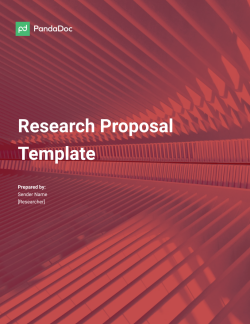
Research Proposal Template
Used 7990 times
4.2 rating (26 reviews)
Reviewed by Olga Asheychik
How to write a Phd proposal with a clear structure
We know that the prospect of writing a research proposal for PhD admission may appear the stuff of nightmares. Even more so if you are new to producing a piece such as this.
But, when you get down to the nitty gritty of what it is, it really isn’t so intimidating. When writing your PhD proposal you need to show that your PhD is worth it, achievable, and that you have the ability to do it at your chosen university.
With all of that in mind, let’s take a closer look at each section of a standard PhD research proposal and the overall structure.
1. Front matter
The first pages of your PhD proposal should outline the basic information about the project. That will include each of the following:
Project title
Typically placed on the first page, your title should be engaging enough to attract attention and clear enough that readers will understand what you’re trying to achieve.
Many proposals also include a secondary headline to further (concisely) clarify the main concept.
Contact information
Depending on the instructions provided by your institution, you may need to include your basic contact information with your proposal.
Some institutions may ask for blind submissions and ask that you omit identifying information, so check the program guidelines to be sure.
Research supervisor
If you already have a supervisor for the project, you’ll typically want to list that information.
Someone who is established in the field can add credibility to your proposal, particularly if your project requires extensive funding or has special considerations.
The guidelines from your PhD program should provide some guidance regarding any other auxiliary information that you should add to the front of your proposal.
Be sure to check all documentation to ensure that everything fits into the designated format.
2. Goals, summaries, and objectives
Once you’ve added the basic information to your document, you’ll need to get into the meat of your PhD proposal.
Depending on your institution, your research proposal may need to follow a rigid format or you may have the flexibility to add various sections and fully explain your concepts.
These sections will primarily be focused on providing high-level overviews surrounding your PhD proposal, including most of the following:
Overall aims, objectives, and goals
In these sections, you’ll need to state plainly what you aim to accomplish with your PhD research.
If awarded funding, what questions will your PHd proposal seek to answer? What theories will you test? What concepts will you explore in your research?
Briefly, how would you summarize your approach to this project?
Provide high-level summaries detailing how you mean to achieve your answers, what the predicted outcomes of your PhD research might be, and precisely what you intend to test or discover.

Significance
Why does your research matter? Unlike with many other forms of academic study (such as a master’s thesis ), doctorate-level research often pushes the bounds of specific fields or contributes to a given body of work in some unique way.
How will your proposed PhD research do those things?
Background details
Because PhD research is about pushing boundaries, adding background context regarding the current state of affairs in your given field can help readers better understand why you want to pursue this research and how you arrived at this specific point of interest.
While the information here may (or may not) be broken into multiple sections, the content here is largely designed to provide a high-level overview of your PhD proposal and entice readers to dig deeper into the methodologies and angles of approach in future sections.
Because so much of this section relies on the remainder of your document, it’s sometimes better to skip this portion of the PhD proposal until the later sections are complete and then circle back to it.
That way, you can provide concise summaries that refer to fully defined research methods that you’ve already explained in subsequent areas.
3. Methodologies and plans
Unlike a master’s thesis or a similar academic document, PhD research is designed to push the boundaries of its subject matter in some way.
The idea behind doctoral research is to expand the field with new insights and viewpoints that are the culmination of years of research and study, combined with a deep familiarity of the topic at hand.
The methodologies and work plans you provide will give advisors some insights into how you plan to conduct your research.
While there is no one right way to develop this section, you’ll need to include a few key details:
Research methods
Are there specific research methods you plan to use to conduct your PhD research?
Are you conducting experiments? Conducting qualitative research? Surveying specific individuals in a given environment?
Benefits and drawbacks of your approach
Regardless of your approach to your topic, there will be upsides and downsides to that methodology.
Explain what you feel are the primary benefits to your research method, where there are potential flaws, and how you plan to account for those shortfalls.
Choice of methodology
Why did you choose a given methodology?
What makes it the best method (or collection of methods) for your research and/or specific use case?
Outline of proposed work
What work is required for PhD research to be complete?
What steps will you need to take in order to capture the appropriate information? How will you complete those steps?
Schedule of work (including timelines/deadlines)
How long will it take you to complete each stage or step of your project?
If your PhDproject will take several years, you may need to provide specifics for more immediate timelines up front while future deadlines may be flexible or estimated.
There is some flexibility here.
It’s unlikely that your advisors will expect you to have the answer for every question regarding how you plan to approach your body of research.
When trying to push the boundaries of any given topic, it’s expected that some things may not go to plan.
However, you should do your best to make timelines and schedules of work that are consistent with your listed goals.
Remember : At the end of your work, you are expected to have a body of original research that is complete within the scope and limitations of the PhD proposal you set forth.
If your advisors feel that your subject matter is too broad, they may encourage you to narrow the scope to better fit into more standardized expectations.
4. Resources and citations
No PhD research proposal is complete without a full list of the resources required to carry out the project and references to help prove and validate the research.
Here’s a closer look at what you’ll need to submit in order to explain costs and prove the validity of your proposal:
Estimated costs and resources
Most doctoral programs offer some level of funding for these projects.
To take advantage of those funds, you’ll need to submit a budget of estimated costs so that assessors can better understand the financial requirements.
This might include equipment, expenses for fieldwork or travel, and more.
Citations and bibliographies
No matter your field of study, doctoral research is built on the data and observations provided by past contributors.
Because of this, you’ll need to provide citations and sources referenced in your PhD proposal documentation.
Particularly when it comes to finances and funding, it might be tempting to downplay the cost of the project.
However, it’s best to provide a realistic estimate in terms of costs so that you have enough of a budget to cover the PhD research.
Adjustments can be made at a later date, particularly as you conduct more research and dive further into the project.
Resources are often presented in the form of a table to make things easier to track and identify.
| Item | Qty. | Cost | Subtotal | Total |
|---|---|---|---|---|
| Project Allowance | ||||
| Translator | 3 months | $500 | $1,500 | |
| Transportation within state | 3 months | $400 | $1,200 | |
| Interview software | 1 month | $30 | $30 | |
| Recording equipment | 1 | $2,400 | $2,400 | |
| Rent (Nigeria) | 3 months | $400 | $1,200 | |
| Groceries (Nigeria) | 3 months | $500 | $1,500 | |
| $8,100 | ||||
| Jet Travel | ||||
| San Diego – Nigeria (roundtrip) | 6 | $600 | $3,600 | $3,600 |
| Total Project Allowance | $11,700 | |||
| Administrative fees | $240 | |||
| Total Resources | $11,940 |
Using PhD proposal templates
Aside from any guidelines set forth by your institution, there are no particularly strict rules when it comes to the format of PhD proposals.
Your supervisor will be more than capable of guiding you through the process.
However, since everything is so structured and formal, you might want to use a PhD proposal template to help you get started.
Templates can help you stay on track and make sure your research proposal follows a certain logic.
A lot of proposal software solutions offer templates for different types of proposals, including PhD proposals.
But, should you use Phd proposal templates? Here are some pros and cons to help you make a decision.
- Expedites the proposal process.
- Helps you jumpstart the process with a flexible document structure.
- Often provides sections with pre-filled examples.
- Looks better than your average Word document.
- May be limiting if you adhere to it too much.
- Might not be perfectly suited to your specific field of research, requiring some customization.
In our PhD research proposal template , we give you just enough direction to help you follow through but we don’t limit your creativity to a point that you can’t express yourself and all the nuances of your research.
For almost all sections, you get a few useful PhD research proposal examples to point you in the right direction.
The template provides you with a typical PhD proposal structure that’s perfect for almost all disciplines.
It can come in quite handy when you have everything planned out in your head but you’re just having trouble putting it onto the page!
Writing a PhD proposal that convinces
Writing and completing a PhD proposal might be confusing at first.
You need to follow a certain logic and share all the required information without going too long or sharing too much about the project.
And, while your supervisor will certainly be there to guide you, the brunt of the work will still fall on your shoulders.
That’s why you need to stay informed, do your research, and don’t give up until you feel comfortable with what you’ve created.
If you want to get a head start, you might want to consider our research proposal template .
It will offer you a structure to follow when writing a PhD proposal and give you an idea on what to write in each section.
Start your 14 days trial with PandaDoc and check out all the tools you’ll have at your disposal!
Research proposals for PhD admission: tips and advice
One of the most important tips for any piece of writing is to know your audience. The staff reviewing your PhD proposal are going through a pile of them, so you need to make sure yours stands within a few seconds of opening it.
The way to do this is by demonstrating value and impact. Academic work is often written for a niche community of researchers in one field, so you need to demonstrate why your work would be valuable to people in that area.
The people reviewing your proposal will likely be in that field. So your proposal should be a little like a sales pitch: you need to write something engaging that identifies with the “customer”, speaks to a problem they’re having, and shows them a solution.
Taking some inspiration from the former University of Chicago professor Larry McEnerney , here are some ideas to keep in mind…
- It’s common for undergraduates and even seasoned academics to write in a specific format or style to demonstrate their understanding and signal that they’re part of the academic community. Instead, you want to write in such a way that actually engages the reader.
- Identify an uncharted or underexplored knowledge gap in your field, and show the reader you have what it takes to fill in that gap.
- Challenge the status quo. Set up an idea that people in your field take for granted — maybe a famous study you think is flawed — and outline how your project could knock it down.
- This is why it’s important to understand who your audience is. You have to write your proposal in such a way that it’s valuable for reviewers. But within your proposal, you should also clearly define which community of researchers your project is for, what problems they have, and how your project is going to solve those problems.
- Every community of researchers has their own implicit “codes” and “keywords” that signal understanding. These will be very different in each field and could be very subtle. But just by reading successful PhD research proposal examples in your field, you can get a sense of what those are and decide how you want to employ them in your own work.
- In this model authors start “at the bottom of the glass” with a very narrow introduction to the idea of the paper, then “fill the glass” with a broader and broader version of the same idea.
- Instead, follow a “problem-solution” framework. Introduce a problem that’s relevant to your intended reader, then offer a solution. Since “solutions” often raise their own new problems or questions, you can rinse and repeat this framework all the way through any section of your proposal.
But how can you apply that advice? If you’re following something like our research proposal template , here are some actionable ways to get started.
- Your title should be eye-catching , and signal value by speaking to either a gap in the field or challenging the status quo.
- Your abstract should speak to a problem in the field, one the reviewers will care about, and clearly outline how you’d like to solve it.
- When you list the objectives of your proposal , each one should repeat this problem-solution framework. You should concretely state what you want to achieve, and what you’re going to do to achieve it.
- While you survey your chosen field in the literature review, you should refer back to the knowledge gap or status quo that you intend to work on. This reinforces how important your proposed project is, and how valuable it would be to the community if your project was successful.
- While listing your research limitations , try to hint at new territory researchers might be able to explore off the back of your work. This illustrates that you’re proposing boundary-pushing work that will really advance knowledge of the field.
- While you’re outlining your funding requirements , be clear about why each line item is necessary and bring it back to the value of your proposed research. Every cent counts!
Frequently asked questions
How long should a phd proposal be.
There really isn’t a specific rule when it comes to the length of a PhD proposal. However, it’s generally accepted that it should be between 1,000 and 2,000 words.
It’s difficult to elaborate on such a serious project in less than 1,000 words but going over 2,000 is often overkill. You’ll lose people’s attention and water down your points.
What’s the difference between a dissertation proposal and a PhD proposal?
There seems to be some confusion over the terms “dissertation” and “PhD” and how you write proposals for each one. However, “dissertation” is just another name for your PhD research so the proposal for a dissertation would be the same since it’s quite literally the same thing.
Does a PhD proposal include budgeting?
Yes, as mentioned, you need to demonstrate the feasibility of your project within the given time frame and with the resources you need, including budgets. You don’t need to be exact, but you need to have accurate estimates for everything.
How is a PhD proposal evaluated?
This will change from one institution to another but these things will generally have a big impact on the reviewers:
- The contribution of the project to the field.
- Design and feasibility of the project.
- The validity of the methodology and objectives.
- The supervisor and their role in the field.
PandaDoc is not a law firm, or a substitute for an attorney or law firm. This page is not intended to and does not provide legal advice. Should you have legal questions on the validity of e-signatures or digital signatures and the enforceability thereof, please consult with an attorney or law firm. Use of PandaDocs’ services are governed by our Terms of Use and Privacy Policy.
Originally published June 9, 2023, updated February 6, 2024
Related articles

Proposals 24 min

Sales 5 min

Document templates 13 min
School of Sociology, Politics and International Studies
How to write a phd research proposal.
In order to help you with your application, the information below aims to give some guidance on how a typical research proposal might look.
Your research proposal is a concise statement (up to 3,000 words) of the rationale for your research proposal, the research questions to be answered and how you propose to address them. We know that during the early stages of your PhD you are likely to refine your thinking and methodology in discussion with your supervisors.
However, we want to see that you can construct a fairly rigorous, high quality research proposal.
We use your research proposal to help us decide whether you would be a suitable candidate to study at PhD level. We therefore assess your proposal on its quality, originality, and coherence. It also helps us to decide if your research interests match those of academics in the School of Sociology, Politics and International Studies (SPAIS) and whether they would be able to provide suitably qualified supervision for your proposed research.
Format of the research proposal
Your proposal should include the following:
Title. A short, indicative title is best.
Abstract. This is a succinct summary of your research proposal (approximately 200-300 words) that will present a condensed outline, enabling the reader to get a very quick overview of your proposed project, lines of inquiry and possible outcomes. An abstract is often written last, after you have written the proposal and are able to summarise it effectively.
Rationale for the research project. This might include a description of the question/debate/phenomenon of interest; an explanation of why the topic is of interest to you; and an outline of the reasons why the topic should be of interest to research and/ or practice (the 'so what?' question).
Aims and initial research question. What are the aims and objectives of the research? State clearly the puzzle you are addressing, and the research question that you intend to pursue. It is acceptable to have multiple research questions, but it is a good idea to clarify which is the main research question. If you have hypotheses, discuss them here. A research proposal can and should make a positive and persuasive first impression and demonstrate your potential to become a good researcher. In particular, you need to demonstrate that you can think critically and analytically as well as communicate your ideas clearly.
Research context for your proposed project. Provide a short introduction to your area of interest with a succinct, selective and critical review of the relevant literature. Demonstrate that you understand the theoretical underpinnings and main debates and issues in your research area and how your proposed research will make an original and necessary contribution to this. You need to demonstrate how your proposed research will fill a gap in existing knowledge.
Intended methodology. Outline how you plan to conduct the research and the data sources that you will use. We do not expect you to have planned a very detailed methodology at this stage, but you need to provide an overview of how you will conduct your research (qualitative and/or quantitative methods) and why this methodology is suited for your proposed study. You need to be convincing about the appropriateness and feasibility of the approaches you are suggesting, and reflective about problems you might encounter (including ethical and data protection issues) in collecting and analysing your data.
Expected outcomes and impact. How do you think the research might add to existing knowledge; what might it enable organisations or interested parties to do differently? Increasingly in academia (and this is particularly so for ESRC-funded studentships), PhD students are being asked to consider how their research might contribute to both academic impact and/or economic and societal impact. (This is well explained on the ESRC website if you would like to find out more.) Please consider broader collaborations and partnerships (academic and non-academic) that will support your research. Collaborative activity can lead to a better understanding of the ways in which academic research can translate into practice and it can help to inform and improve the quality of your research and its impact.
Timetable. What is your initial estimation of the timetable of the dissertation? When will each of the key stages start and finish (refining proposal; literature review; developing research methods; fieldwork; analysis; writing the draft; final submission). There are likely to overlaps between the stages.
Why Bristol? Why – specifically – do you want to study for your PhD at Bristol ? How would you fit into the School's research themes and research culture . You do not need to identify supervisors at the application stage although it can be helpful if you do.
Bibliography. Do make sure that you cite what you see as the key readings in the field. This does not have to be comprehensive but you are illustrating the range of sources you might use in your research.
We expect your research proposal to be clear, concise and grammatically correct. Prior to submitting your research proposal, please make sure that you have addressed the following issues:
- Have you included a clear summary of what the proposed research is about and why it is significant?
- Have you clearly identified what your proposed research will add to our understanding of theory, knowledge or research design?
- Does it state what contributions it will make to policy and/or practice?
- Does the proposal clearly explain how you will do the research?
- Is the language clear and easy to understand by someone who is not an expert in the field?
- Is the grammar and spelling correct?
Planning your PhD research: A 3-year PhD timeline example

Planning out a PhD trajectory can be overwhelming. Example PhD timelines can make the task easier and inspire. The following PhD timeline example describes the process and milestones of completing a PhD within 3 years.
Elements to include in a 3-year PhD timeline
What to include in a 3-year PhD timeline depends on the unique characteristics of a PhD project, specific university requirements, agreements with the supervisor/s and the PhD student’s career ambitions.
For instance, some PhD students write a monograph while others complete a PhD based on several journal publications. Both monographs and cumulative dissertations have advantages and disadvantages , and not all universities allow both formats. The thesis type influences the PhD timeline.
The most common elements included in a 3-year PhD timeline are the following:
The example scenario: Completing a PhD in 3 years
Many (starting) PhD students look for examples of how to plan a PhD in 3 years. Therefore, let’s look at an example scenario of a fictional PhD student. Let’s call her Maria.
In order to complete her PhD programme, Maria also needs to complete coursework and earn 15 credits, or ECTS in her case.
Example: planning year 1 of a 3-year PhD
Most PhD students start their first year with a rough idea, but not a well-worked out plan and timeline. Therefore, they usually begin with working on a more elaborate research proposal in the first months of their PhD. This is also the case for our example PhD student Maria.
Example: Planning year 2 of a 3-year PhD
Example: planning year 3 of a 3-year phd, example of a 3 year phd gantt chart timeline.
Combining the 3-year planning for our example PhD student Maria, it results in the following PhD timeline:
Final reflection
In fact, in real life, many PhD students spend four years full-time to complete a PhD based on four papers, instead of three. Some extend their studies even longer.
Master Academia
Get new content delivered directly to your inbox, 10 amazing benefits of getting a phd later in life, how to prepare your viva opening speech, related articles, 25 short graduation quotes: inspiration in four words or less, 3 sample recommendation letters for brilliant students, writing a successful academic cv (and a free template), are doctoral summer schools for phd students worth it.
- Postgraduate
Research degrees
- Examples of Research proposals
- Find a course
- Accessibility
Examples of research proposals
How to write your research proposal, with examples of good proposals.
Research proposals
Your research proposal is a key part of your application. It tells us about the question you want to answer through your research. It is a chance for you to show your knowledge of the subject area and tell us about the methods you want to use.
We use your research proposal to match you with a supervisor or team of supervisors.
In your proposal, please tell us if you have an interest in the work of a specific academic at York St John. You can get in touch with this academic to discuss your proposal. You can also speak to one of our Research Leads. There is a list of our Research Leads on the Apply page.
When you write your proposal you need to:
- Highlight how it is original or significant
- Explain how it will develop or challenge current knowledge of your subject
- Identify the importance of your research
- Show why you are the right person to do this research
- Research Proposal Example 1 (DOC, 49kB)
- Research Proposal Example 2 (DOC, 0.9MB)
- Research Proposal Example 3 (DOC, 55.5kB)
- Research Proposal Example 4 (DOC, 49.5kB)
Subject specific guidance
- Writing a Humanities PhD Proposal (PDF, 0.1MB)
- Writing a Creative Writing PhD Proposal (PDF, 0.1MB)
- About the University
- Our culture and values
- Academic schools
- Academic dates
- Press office
Our wider work
- Business support
- Work in the community
- Donate or support
Connect with us
York St John University
Lord Mayor’s Walk
01904 624 624
York St John London Campus
6th Floor Export Building
1 Clove Crescent
01904 876 944

- Policies and documents
- Module documents
- Programme specifications
- Quality gateway
- Admissions documents
- Access and Participation Plan
- Freedom of information
- Accessibility statement
- Modern slavery and human trafficking statement
© York St John University 2024
Colour Picker
Lorem ipsum dolor sit amet, consectetur adipiscing elit, sed do eiusmod tempor incididunt ut labore et dolore magna aliqua. Dui id ornare arcu odio.
Felis bibendum ut tristique et egestas quis ipsum. Et netus et malesuada fames ac turpis egestas. Faucibus pulvinar elementum integer enim neque volutpat ac. Hac habitasse platea dictumst vestibulum rhoncus.
Nec ullamcorper sit amet risus nullam eget felis eget. Eget felis eget nunc lobortis mattis aliquam faucibus purus.

A PhD timeline for finishing quickly [Free Gantt Download]
Navigating the labyrinthine journey of a PhD program is no small feat.
From the day you step into your graduate program as a bright-eyed doctoral student, you’re immediately thrust into a complex weave of coursework, research, and milestones.
By the second year, you’ve transitioned from coursework to research, laying the groundwork for your dissertation—a pivotal component in your scholarly endeavour.
Come the third year, you face the critical oral examination, a hurdle that could make or break years of hard work.
But how does one streamline this multifaceted journey? The answer lies in a well-planned PhD timeline.
This blog serves as an invaluable guide for any PhD student looking to complete their doctoral studies efficiently, walking you through each milestone from coursework to graduation.
How to Begin with the PhD Timeline Planning?
Planning your PhD timeline is an essential first step in your PhD program.
Success in any PhD program depends, to a large extent, on effective time management and keeping track of progress through a thoughtfully crafted PhD timeline.
Start with outlining all your major requirements:
- coursework,
- dissertation,
- and the expected time needed for each task.
I also highly recommend factoring in failure time – give yourself a little bit of wiggle room for when things, invariably – go wrong.
It’s crucial to remain realistic about the time you can commit daily or weekly while keeping long-term goals in mind.
Regular check-ins on your PhD timeline and supervisor will help you stay on track and allow you to adapt if necessary.
Adjustments may be needed as you progress through your PhD program, but having a timeline as a guide can make the journey less daunting and more achievable.
Elements to include in a 3-year PhD timeline
The initial stage in this timeline typically involves coursework, often lasting one year, where the student engrosses themselves in advanced study in their chosen field.
Once the coursework is done (USA PhDs), they focus on proposing, conducting, and presenting their initial research.
By the end of the second year, most students should have a clear direction for their dissertation, a core component of the PhD process.
In this third and final year of the PhD timeline, the student focuses primarily on completing their dissertation, which involves collecting data, analyzing results, and organizing their research into a substantial, original, and cohesive document that contributes to contemporary knowledge in their field.
Regular reviews and modifications of the PhD timeline may also be necessary to accommodate various unpredictable circumstances, thus making this timeline both a guide and a flexible workplan.
It is a significant tool in successfully navigating the maze of becoming a PhD holder.
Create Your PhD Timeline for a 3 year completion
Creating a timeline for a 3-year PhD program requires careful planning, as you’ll have multiple milestones and tasks to complete.
This timeline may vary depending on your specific field, institution, or country, but here is a general outline you can use as a starting point:
| Year & Quarter | Activity/Milestone | Description | Outcome/Output |
|---|---|---|---|
| Admission & Onboarding | Formalities for joining the program, including orientation. | Official start of the program. | |
| Initial Literature Review | Familiarize yourself with the existing research in your field. | Foundation for your research. | |
| Coursework | Complete required or optional courses. | Credits/Education | |
| Research Proposal Outline | Develop a draft outline for your PhD proposal. | Outline for proposal | |
| Coursework & Seminars | Continue with coursework and attend relevant seminars. | Credits/Education | |
| Meet with Advisor | Discuss research interests and outline. | Feedback for refinement | |
| Complete Research Proposal | Finalize your research proposal with your advisor’s input. | Approved Proposal | |
| Ethics Approval (if needed) | Submit proposal for ethics approval if required. | Ethics Clearance |
| Year & Quarter | Activity/Milestone | Description | Outcome/Output |
|---|---|---|---|
| Data Collection | Start gathering data according to your proposal. | Initial Data | |
| Intermediate Review | Review progress with advisor. | Feedback for refinement | |
| Data Analysis | Start analyzing the collected data. | Preliminary Findings | |
| Draft Chapters | Start writing initial chapters of your thesis. | Draft Chapters | |
| Further Analysis | Conduct additional analysis if necessary. | Refined Findings | |
| Publish/Conference | Consider publishing initial findings or presenting at a conference. | Paper/Presentation | |
| Complete Data Collection | Finish gathering all necessary data. | Finalized Data | |
| Update Thesis Draft | Update your thesis draft with the complete analysis. | Updated Draft |
| Year & Quarter | Activity/Milestone | Description | Outcome/Output |
|---|---|---|---|
| Thesis Writing | Focus primarily on writing your thesis. | Near-final draft | |
| Peer Review | Have peers or mentors review the thesis draft. | Feedback for refinement | |
| Thesis Submission | Finalize and submit your thesis for review. | Submitted Thesis | |
| Defense Preparation | Prepare for your thesis defense. | Defense Presentation | |
| Thesis Defense | Defend your thesis in front of a committee. | Committee’s Decision | |
| Revisions (if needed) | Make any revisions recommended by the committee. | Final Thesis | |
| Final Submission | Submit the finalized thesis. | PhD Thesis | |
| Graduation | Complete any remaining formalities. | PhD Awarded |
Free Gantt chart excel template
Here is a free template you can modify for your own research:
Example Gantt chart for a USA PhD
Here are some common steps involved in completing a PhD, which I’ll use to create the Gantt chart:

- Orientation and Coursework (Semester 1) : Familiarization with the university, department, and coursework.
- Coursework (Semester 2) : Continued coursework and possible teaching/research assistantships.
- Select Advisor and Research Topic : Usually done towards the end of the first year or the beginning of the second year.
- Preliminary Research : Initial research and literature review.
- Complete Coursework (Semester 3) : Wrap up any remaining required courses.
- Research Proposal : Develop a full research proposal including methodology.
- Qualifying Exams : Exams to transition from a Ph.D. student to a Ph.D. candidate.
- Begin Research : Start of actual research based on the approved proposal.
- Conduct Research : Data collection, experiments, and analysis.
- Intermediate Review : A review to assess the progress of the research.
- Write Papers : Start writing papers and possibly publishing in journals.
- Finalize Research : Final experiments and data analysis.
- Write Dissertation : Writing the actual Ph.D. dissertation.
- Dissertation Defense : Defending the dissertation before the committee.
- Graduation : Completing all requirements and graduating.
Example Gantt chart for a UK, European and Australian PhD
For Ph.D. programs outside the United States, especially in Europe and some other parts of the world, students often go straight into research without the need for coursework. Here are some common steps for such programs:

- Orientation : Familiarization with the university and department.
- Select Advisor and Research Topic : Usually done at the beginning of the program.
Wrapping up
The journey to earning a PhD is complex and demanding, filled with academic milestones from coursework to research to dissertation writing.
The key to a smooth and efficient doctoral journey lies in well-planned time management—a structured PhD timeline.
This blog serves as an invaluable guide, offering detailed tips for planning out each academic year in both U.S. and international PhD programs. It emphasizes the importance of starting with an outline of major requirements and factoring in “failure time” for unforeseen challenges.
For those looking to navigate their PhD journey in three years or beyond, having a flexible but comprehensive timeline can be the compass that guides them successfully through the academic labyrinth.
Whether you’re just starting out or already deep into your research, the principles and strategies outlined here can help streamline your path to that coveted doctoral hood.

Dr Andrew Stapleton has a Masters and PhD in Chemistry from the UK and Australia. He has many years of research experience and has worked as a Postdoctoral Fellow and Associate at a number of Universities. Although having secured funding for his own research, he left academia to help others with his YouTube channel all about the inner workings of academia and how to make it work for you.
Thank you for visiting Academia Insider.
We are here to help you navigate Academia as painlessly as possible. We are supported by our readers and by visiting you are helping us earn a small amount through ads and affiliate revenue - Thank you!

2024 © Academia Insider

- Graduate School
Oxford PhD Proposal Sample: The Best Proposal

An Oxford PhD proposal sample, like Oxford personal statement examples , should give you an idea of how to structure and write your own PhD proposal, which is a key element of how to get into grad school . Should you pursue a master's or PhD , you should know that, with few exceptions, all graduate programs require that applicants submit a research proposal. It can vary in length (usually between 1,000 and 3,000 words) and must outline your main research goals and methods and demonstrate your facility with the topic. The almost 35,000 applications Oxford received in a recent year should give you some idea of how competitive getting into a master's or PhD program is.
Writing a stellar proposal is important to make your application stand out, so, to that end, this article will show you an expert-approved Oxford PhD proposal sample based on the actual requirements of an Oxford graduate program.
>> Want us to help you get accepted? Schedule a free initial consultation here <<
Listen to the blog!
Article Contents 11 min read
Oxford phd proposal sample.
PhD Program : DPhil in Migrant Studies
Research Proposal Length: minimum 2000 - maximum 3000 words
To: Matthew J. Gibney, Professor of Politics and Forced Migration
Name: Adrian Toews
Title: Wired and Hungry Masses: Social Media, Migrants and Cultural Bereavement in the Digital Sphere
Proposed Research Topic: Does social media help migrants cross the cultural barriers of their adopted home and succeed in helping them preserve touchstones of their home culture?
Abstract: The ascendance of social media platforms has increased and, strangely, decreased interconnectedness among disparate groups in society. But, while social media has been implicated, rightly, as a catalyst for the rise of disinformation, hate speech, and other anti-social behaviors, I would argue that its ubiquity and prevalence provide those experiencing cultural bereavement with a more-effective coping mechanism, as social media is able to replicate, in a non-physical space, the culturally specific mechanisms they know and which, prior to digital communications, could not be replicated in new, adopted countries and cultures.
Objective: I want to present social media as an informal networking tool, expressive outlet, and cultural road map with which migrants who are experiencing cultural bereavement can engage for two specific reasons: 1) to assuage the grief that accompanies anyone who has left their homeland as a migrant or refugee, and 2) to help them assimilate into their new identity by giving them a window into the cultural norms and practices of their new country or culture.
An Oxford PhD proposal sample like this one is only one version of what a proposal can look like, but it should contain at least these basic elements. You should know how to choose a PhD topic at this point in your career, but if you still feel like you need help, then you can hire PhD admission consultants to help you choose your topic and research interests.
Above all, you should know why you want to do a PhD . Answering this question first will be effective in helping you ultimately decide on a program, which can then make it easier for you to write any number of different doctorate-related texts, such as a PhD motivation letter and a statement of intent .
Understanding your true motivations, passions, and research interests is doubly important when pursuing a PhD since you do not want to invest so much time and resources in a subject you are only partially interested in. If you can honestly answer why you want to pursue a PhD, you can then take concrete steps toward defining your research goals and how they can be fulfilled by the program you choose.
Your Oxford PhD proposal should adhere to the requirements set forth by the program you wish to enter. Regardless of your discipline or field, almost all PhD programs at Oxford require that you submit a research proposal of between 2,000 and 3,000 words.
A statement of intent is another type of essay that applicants are often asked to submit to graduate schools. It involves talking about your past academic experiences and achievements, what you intend to do in graduate school, and why you want to go there. A PhD proposal, on the other hand, contains no personal details or experiences.
Instead, a PhD proposal should be a focused, concrete road map built around a specific research question. In your proposal, you list the theoretical approaches that you are going to use, research methods, past scholarship on the same topic, and other investigative tools to answer this question or present evidence from this research to support your argument.
A statement of purpose is another common essay that graduate school applicants must submit. The line between a statement of purpose and a statement of intent is a fine one, but the line between a statement of purpose and a PhD proposal is much more prominent, and there is no mistaking the two. So, you should not read over graduate school statement of purpose examples to learn how to write a PhD proposal.
A statement of purpose can also be research-focused, but in an undefined way. A PhD proposal combines theory and practice and requires that you demonstrate your knowledge of proper scientific research, investigative methods, and the existing literature on your topic.
You should include a title page where you list your name, the program you are applying to, and a title for your research project. You should address it to a specific faculty member, who can perhaps, if they agree, show you how to prepare for a thesis defense . The proposal itself should include an abstract, an overview of the existing scholarship on your topic, research questions, methods, and a bibliography listing all your sources.
The usual length of PhD proposals is between 1,000 and 3,000 words, but your program may have different requirements, which you should always follow.
There are up to 350 different graduate programs at Oxford, all with their own particular requirements, so the university does not set forth a universal set of requirements for all graduate programs. Many of these programs and their affiliated schools offer students advice on how to write a PhD proposal, but there are few, if any, stated requirements other than the implied ones, which are that you have familiarity with how to conduct graduate-level research and are knowledgeable in the field you are researching.
A majority of programs do, yes. There are always exceptions, but a fundamental part of pursuing a PhD involves research and investigation, so it is normal for any PhD program to require that applicants write a PhD proposal.
It is quite possible for your research interests and direction to change during your research, but you should not be discouraged. Graduate programs understand that these things happen, but you should still do your best to reflect the current state of research on your topic and try to anticipate any changes or sudden shifts in direction while you research.
Want more free tips? Subscribe to our channels for more free and useful content!
Apple Podcasts
Like our blog? Write for us ! >>
Have a question ask our admissions experts below and we'll answer your questions, get started now.
Talk to one of our admissions experts
Our site uses cookies. By using our website, you agree with our cookie policy .
FREE Training Webinar:
How to make your grad school application stand out, (and avoid the top 5 mistakes that get most rejected).
42+ SAMPLE Research Work Plan in PDF | MS Word | Google Docs | Apple Pages

Research Work Plan | MS Word | Google Docs | Apple Pages
42+ sample research work plan, what is a research work plan, different types of research work plans, basic components of a research work plan , how to write a research work plan, what are the major components of a research work plan, what are the advantages of a research work plan, what are some examples of research work plans, how to manage and monitor a research work plan.
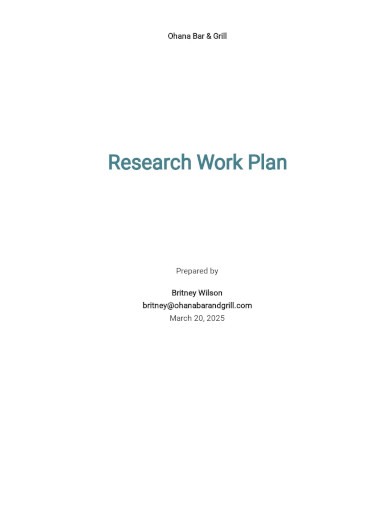
Free Research Work Plan Template
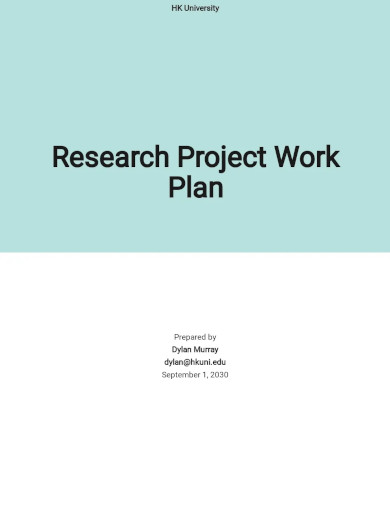
Research Project Work Plan Template
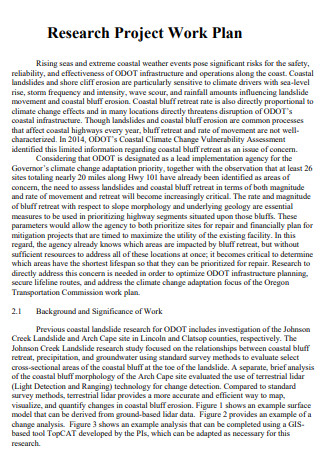
Research Project Work Plan
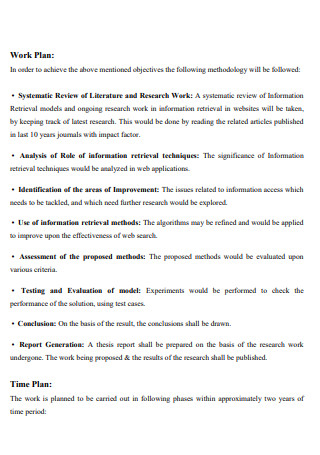
Research Work Plan
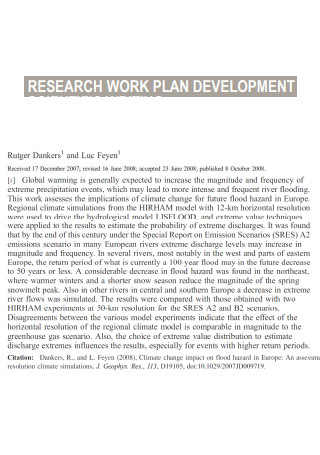
Research Work Plan Development
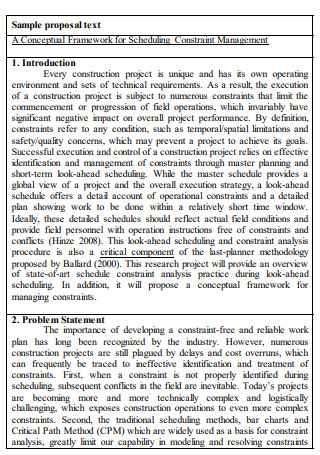
Sample Research Work Plan
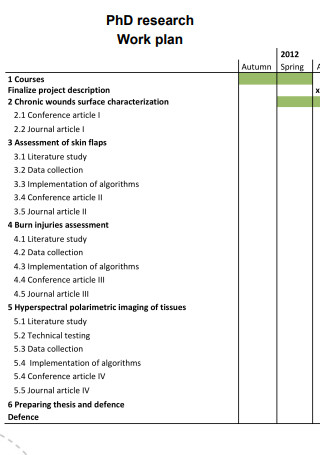
PhD Research Work Plan

Research Data Management Work Plan
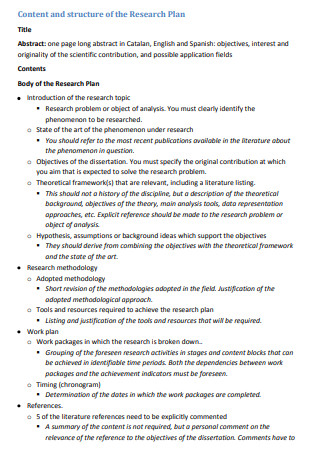
Structure of Research Work Plan

Research Work Action Plan
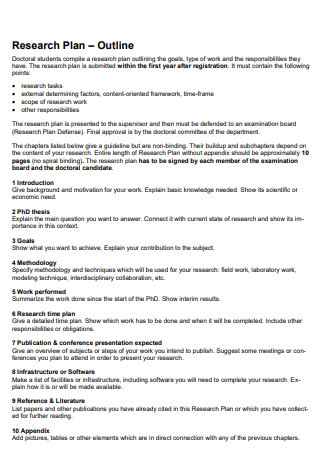
Research Work Plan Outline

Work Plan for Research Project
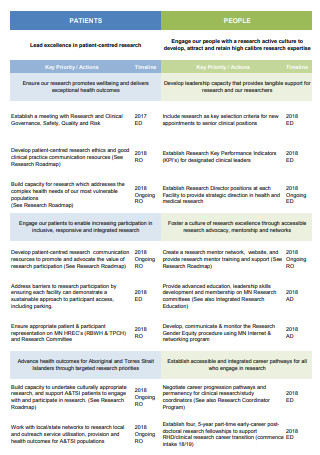
Transport Research Work Plan
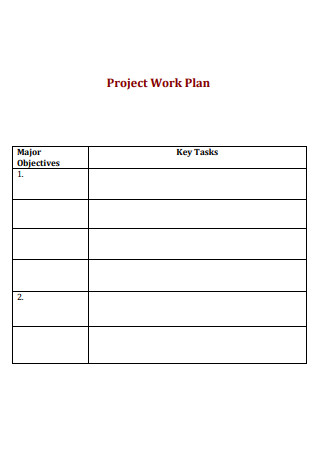
Monthly Project Research Work Plan
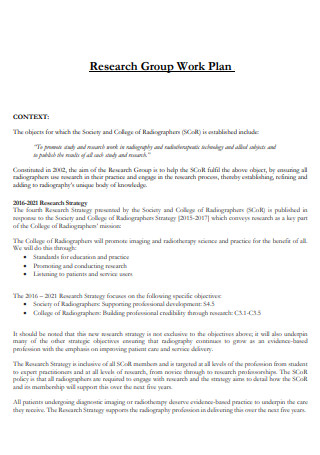
Research Work Group Plan
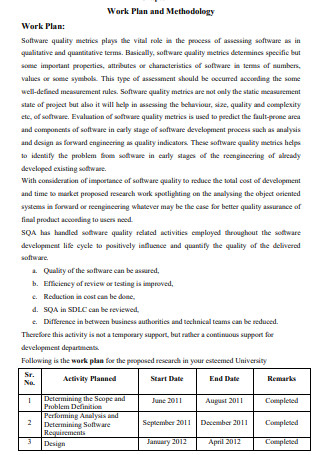
Research Work Plan and Methodology
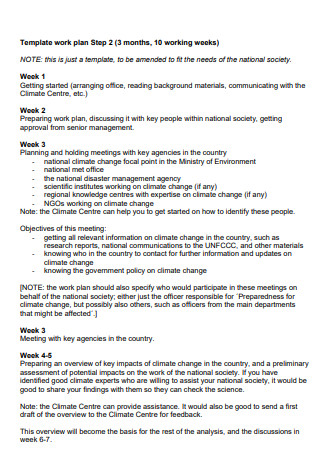
Half Yearly Research Work Plan
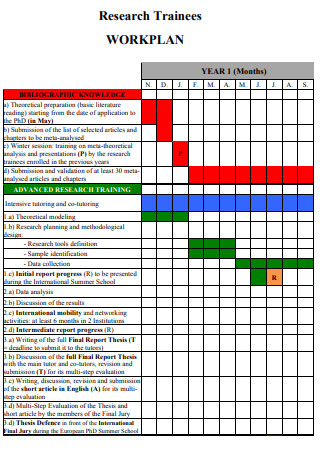
Research Trainee Work Plan

Research Team Work Plan
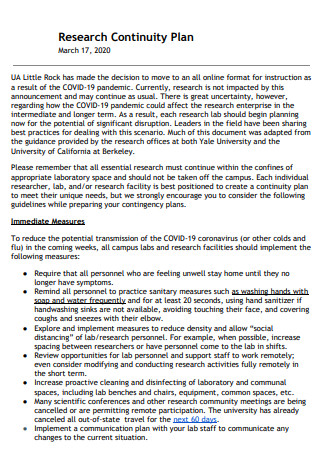
Research Work Continuity Plan
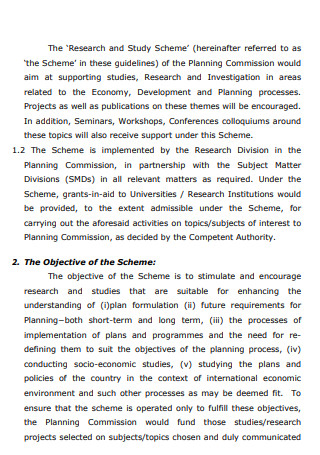
Simple Research Work Plan

Research Work Plan Project Proposal
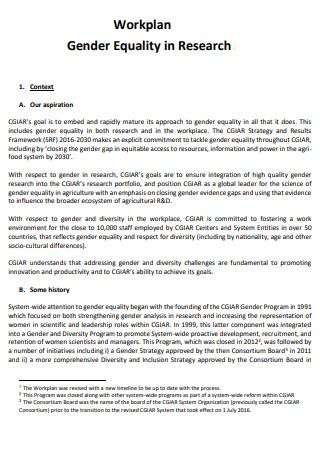
Gender Equality in Research Work Plan
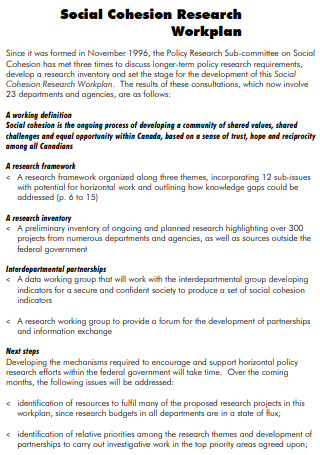
Social Cohesion Research Work Plan
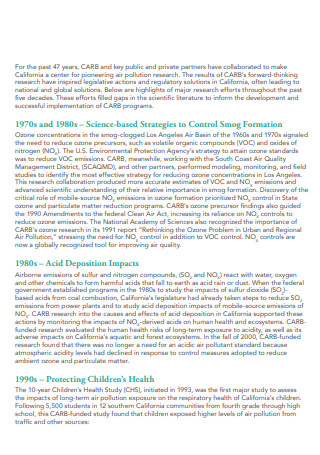
Strategic Research Work Plan
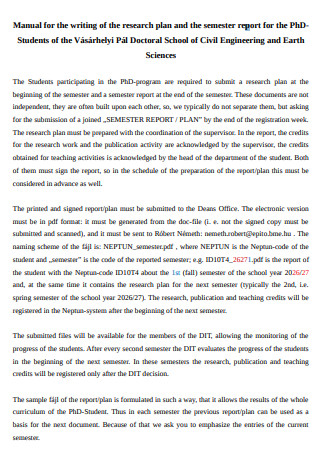
Formal Research Work Plan
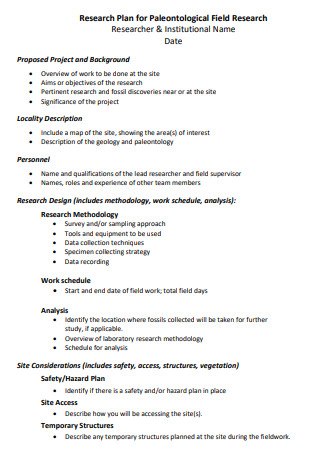
Field Research Work Plan
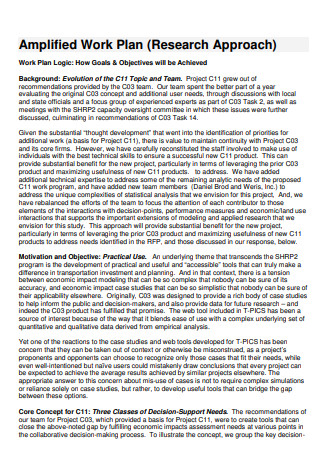
Research Amplified Work Plan
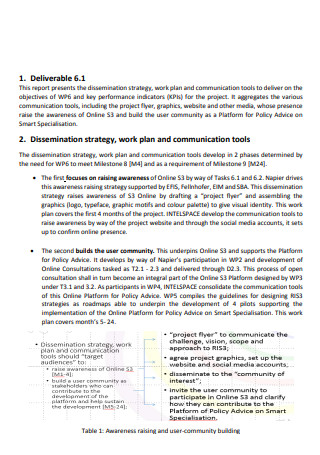
Basic Research Work Plan
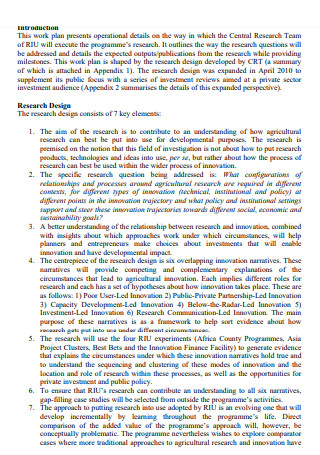
Central Research Team Work Plan
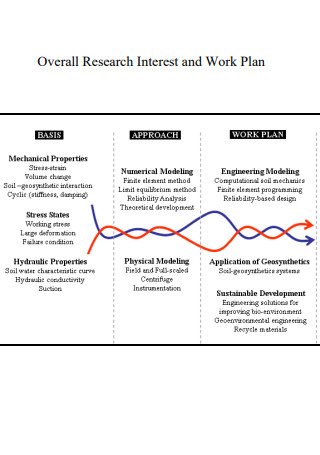
Research Interest and Work Plan
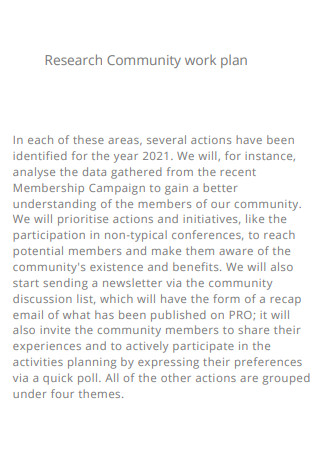
Research Community Work Plan
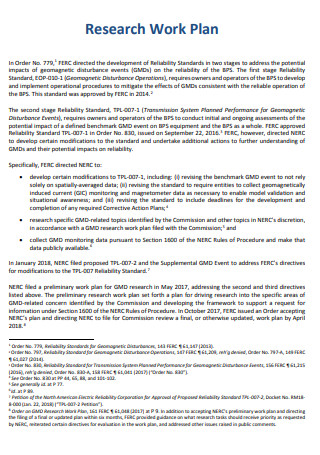
General Research Work Plan
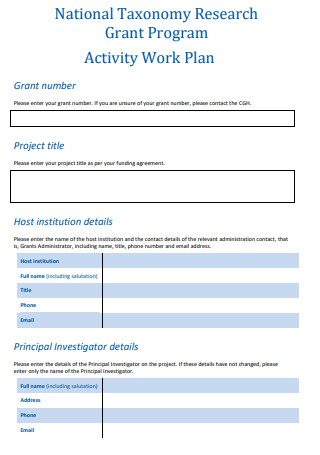
Research Activity Work Plan
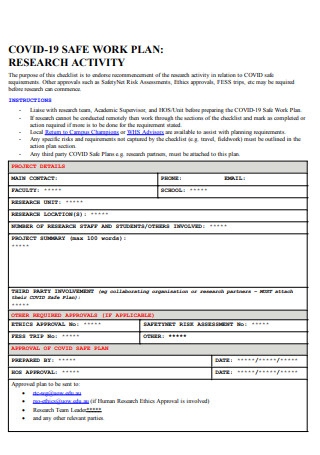
Research Safe Work Plan

Research Annual Work Plan
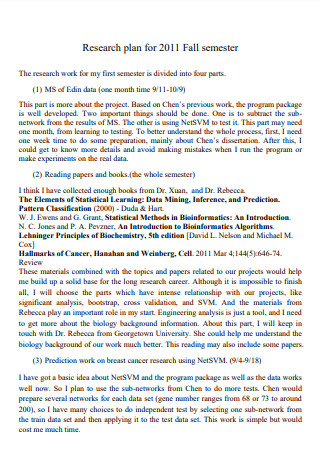
Research Work Plan Template
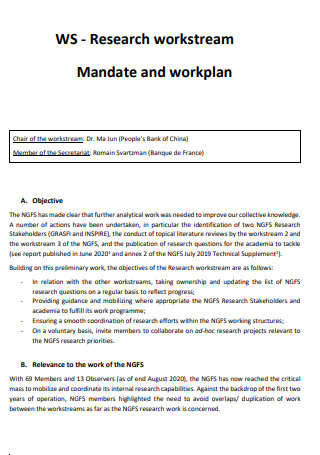
Research Mandate Work Plan
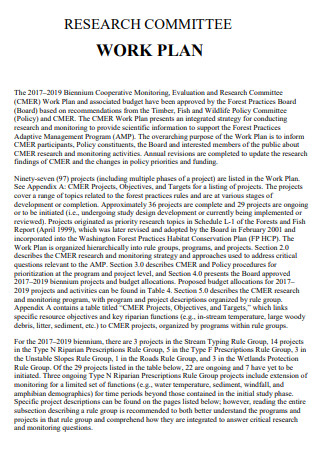
Research Commitee Work Plan
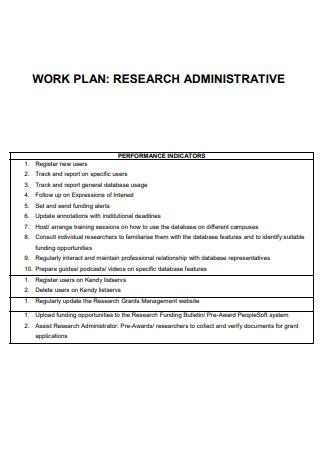
Research Administrative Work Plan
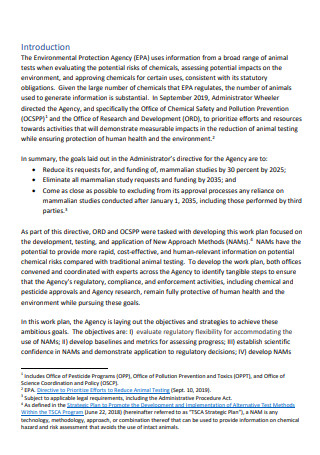
Research And Development Work Plan
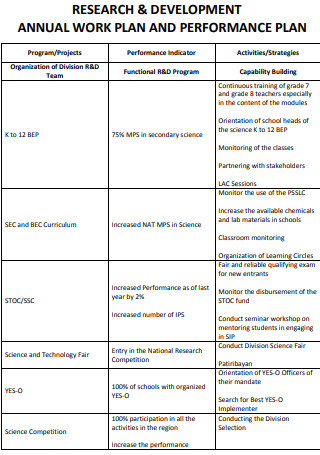
Research Work And Performance Plan

Research Project Work Plan Example
1. field research plan , 2. phd research work plan, 3. covid-19 safety research work plan, 4. social cohesion research work plan, step 1: develop the introduction, focus of research, goals and methodology, step 2: summarize the research work , step 3: set a research timeline , step 4: add other details, step 5: proofread and prepare the overall plan, share this post on your network, you may also like these articles.

In this comprehensive guide, we explore the essentials of creating an effective Floor Plan. Whether you are designing a new home, renovating an existing space, or planning an office…
Nursing Care Plan

In this comprehensive guide, we explore the essentials of creating an effective Nursing Care Plan. Whether you are a nursing student, a new graduate, or an experienced nurse, this…
browse by categories
- Questionnaire
- Description
- Reconciliation
- Certificate
- Spreadsheet
Information
- privacy policy
- Terms & Conditions

COMMENTS
A PhD research plan or schedule can be prepared using the GANTT chart which includes a month, semester or year-wise planning of the entire PhD research work. First, enlist goals and objectives. It's not about your research objective enlisted in your proposal. I'm talking about the objectives of your PhD.
Written by Mark Bennett. You'll need to write a research proposal if you're submitting your own project plan as part of a PhD application. A good PhD proposal outlines the scope and significance of your topic and explains how you plan to research it. It's helpful to think about the proposal like this: if the rest of your application explains ...
Therefore, in a good research proposal you will need to demonstrate two main things: 1. that you are capable of independent critical thinking and analysis. 2. that you are capable of communicating your ideas clearly. Applying for a PhD is like applying for a job, you are not applying for a taught programme.
Research proposal example/sample - PhD-level (PDF/Word) Proposal template (Fully editable) If you're working on a research proposal for a dissertation or thesis, you may also find the following useful: Research Proposal Bootcamp: Learn how to write a research proposal as efficiently and effectively as possible; 1:1 Proposal Coaching: Get ...
A research proposal should present your idea or question and expected outcomes with clarity and definition - the what. It should also make a case for why your question is significant and what value it will bring to your discipline - the why. What it shouldn't do is answer the question - that's what your research will do.
Make sure you can ask the critical what, who, and how questions of your research before you put pen to paper. Your research proposal should include (at least) 5 essential components: Title - provides the first taste of your research, in broad terms. Introduction - explains what you'll be researching in more detail.
Guidance for PhD applicants Faculty of Education, University of Cambridge. The 1,500 word research proposal is an important element of your application to doctoral study, whether full-time or part-time. It offers you the opportunity to outline the research you intend to conduct, including how you plan to go about it, and how your research might ...
1. Title. Your title should indicate clearly what your research question is. It needs to be simple and to the point; if the reader needs to read further into your proposal to understand your question, your working title isn't clear enough. Directly below your title, state the topic your research question relates to.
A PhD proposal is an outline of your proposed project. It needs to: Define a clear question and approach to answering it. Highlight its originality and/or significance. Explain how it adds to, develops (or challenges) existing literature in the field. Persuade potential supervisors of the importance of the work, and why you are the right person ...
The research proposal - an outline. Your proposal should be typed double-spaced, if possible, and be between 1,000 and 2,000 words. Your PhD proposal can be added under the 'Supporting Documents' section of the Postgraduate Applications Online System. Your proposal should contain at least the following elements:
When writing your PhD proposal you need to show that your PhD is worth it, achievable, and that you have the ability to do it at your chosen university. With all of that in mind, let's take a closer look at each section of a standard PhD research proposal and the overall structure. 1. Front matter.
Structure of your proposal • Context/Background knowledge demonstrate a good awareness of key literature and debates linked to your area of research how does your proposal link to existing literature on this subject area? how will your work support or contest the existing literature in the field?
Your research proposal is a concise statement (up to 3,000 words) of the rationale for your research proposal, the research questions to be answered and how you propose to address them. We know that during the early stages of your PhD you are likely to refine your thinking and methodology in discussion with your supervisors.
Example: Planning year 2 of a 3-year PhD. Maria completed her first round of data collection according to plan, and starts the second year of her PhD with a lot of material. In her second year, she will focus on turning this data into two journal articles. Months 1-2: Maria works on her data analysis.
Research proposals. Your research proposal is a key part of your application. It tells us about the question you want to answer through your research. It is a chance for you to show your knowledge of the subject area and tell us about the methods you want to use. We use your research proposal to match you with a supervisor or team of supervisors.
Outline. ReferencesPurpose of the PhD research planDevelop a PhD project with realistic goals that can be achieved within the time. ame of the PhD period (normally 3-4 years).Ensure that the PhD student and PhD supervisor(s) are aligned wrt goa. of the project and the work plan/schedule. mentfunding for e.g. equipment an.
Sample Research Proposals. You will find here two examples of proposals for postgraduate research from the Department of Social Policy and Criminology. They both give good indication of the sorts of things that need to be included. The first, on fathering after divorce or separation, represents first thoughts on the proposed topic, but sets out ...
Elements to include in a 3-year PhD timeline. The initial stage in this timeline typically involves coursework, often lasting one year, where the student engrosses themselves in advanced study in their chosen field. Once the coursework is done (USA PhDs), they focus on proposing, conducting, and presenting their initial research.
nd its implications for the research methods]Method:1. Conduct a l. te. ature review on leadership and communication in SMTs.2. Observe the group four hours per week for six weeks, focusing mostly on conversations at team meetings, especially those conversations in which the group addresses changes to their work proc. ss.
An Oxford PhD proposal sample, like Oxford personal statement examples, should give you an idea of how to structure and write your own PhD proposal, which is a key element of how to get into grad school. ... I plan to work with thoroughly vetted resettlement agencies, both governmental and non-governmental, to create a sample group of about 100 ...
er, the proposal deadline is December 1. During the proposal stage, students should discuss their research interests with CM faculty members, identify a research topic, conduct preliminary literatu. e review and develop a project proposal. The proposal should discuss problem statement, objectives, research methodology, research activities.
b. Table of content (to be written last) c. Abstract (to be written last): A concise summary of your project including the most important points. Please make sure your abstract is perfectly logic and coherent. Read abstracts in scientific journals to get familiar with the wording and the grammar in abstract writing. d.
Step 3: Set a Research Timeline. Set a research blank timeline to help guide the execution of the research work plan. Construct a detailed time plan and show which research work has to be completed and when it will be done. Include other responsibilities or obligations that must be performed in your research project.